Australia’s Best Sangiovese
With six of the brightest wine minds in attendance, and 36 wines carefully selected and decanted for this blind tasting, we set out to get a better image of where the grape currently stands in an Australian context.
We gathered every Tasmanian traditional method sparkling that we could find and set our expert panel the task of finding the wines that compelled the most. That means we’re not necessarily looking for some platonic ideal of classic fizz, but rather wines of interest and character regardless of style. All wines were tasted blind, and each panellist named their top six wines.
Our panel: Xavier Vigier DipWSET, Wine Buyer/Advisor/Head Sommelier Mr Claremont Wines; Kate McIntyre MW, Marketing and Business Development Manager of Moorooduc Estate; Dr Ray Nadeson, Winemaker and Owner Lethbridge Estate; Ed Carr Group Winemaker Accolade Wines (House of Arras); Natalie Fryar Winemaker and Owner Bellebonne; Hayley Williamson Sommelier at Nomad; Christian McCabe Owner restaurants Embla and Lesa and wine importer/wholesaler Principal Wine.

McIntyre and Nadeson nominated this as their top wine of the tasting, it came one place back for Carr and McCabe also had it in his top six. “Fine, persistent bead and lifted on the nose with burnt toast at first, then brioche, lemon marmalade that has just started cooking, touch of raspberry but mostly chardonnay, slightly salty,” wrote McIntyre. “Lovely balance on the palate – more red berry fruit, with salted lemon and saltbush to balance, lees richness, very elegant – good length and refreshing finish. Classy.” “A stunning sparkling wine,” declared Nadeson, “vibrant with a fine bead on pouring which persisted in the mouth beautifully. Complex bouquet of green apple, grapefruit and citrus flower meld effortlessly with hints of brioche and lees-induced nuances. …Impeccably balanced by a rapier-like acidity; the dosage expertly managed. The finish persists, long and impressively – truly delicious and captivating.” “Savoury with chaff, yoghurt and a hint of attractive aldehyde,” wrote Carr. “There’s great weight and presence on the palate, complex and toasty, intense secondaries. Great acid line. Structural and nicely dried by a touch of aldehyde – a real top-end style, generous, complex, balanced and with great zest.”
Experience the story – shop the wines at Finestro online cellar door.
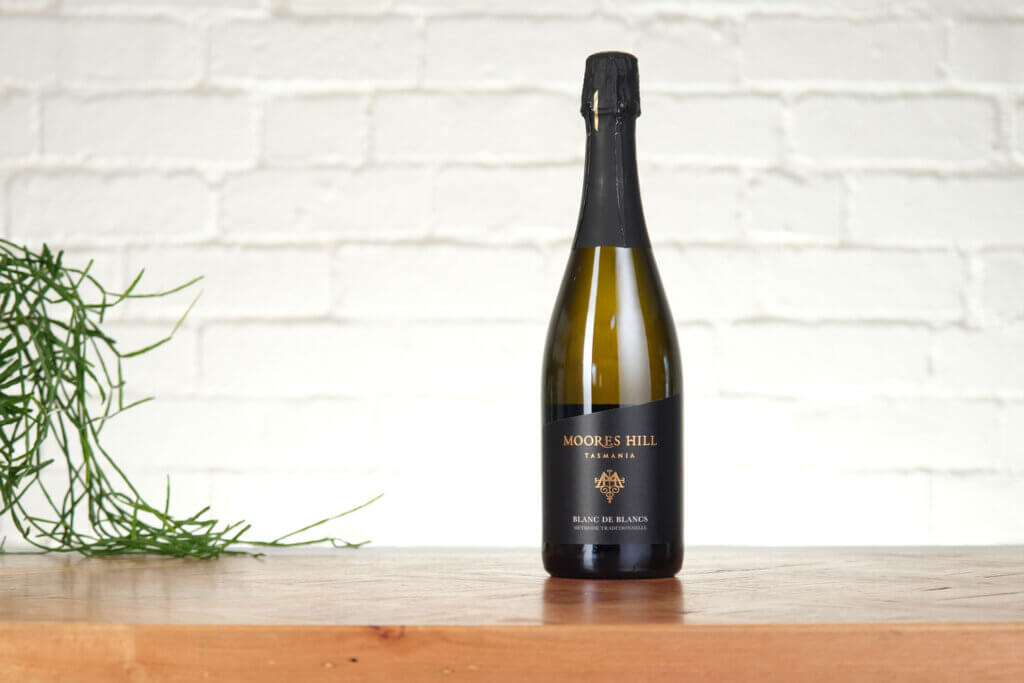
Nadeson and Vigier had this one off the top spot, while Fryar and Williamson also gave it a top-six finish. “A richer, more powerful style boasting complex, rich aromas of green apple, grapefruit, and roasted nut, elevated by a touch of oak and lees-induced nuances,” wrote Nadeson. “The density of fruit flavours is impressive and are ingeniously intertwined with a hint of grapefruit pith grip, lending complexity in the palate. Expertly managed dosage creates a balance between fruit weight and acidity. The finish, long and persistent, leaves a lasting impression of complexity and deliciousness. Rich yet refined.” “…This leans towards the more serious end of the sparkling spectrum,” noted Vigier. “…A delightful blend of ripe stone fruits… alongside exotic fruits like guava and pineapple… Secondary notes derived from lees contact bring forth a creamy essence, reminiscent of yogurt and cream. …There are intriguing nuances of oxidative handling, with delicate hints of roasted green almonds and honey. …The high levels of freshness interplay harmoniously, while the concentration of fruit allows the acidity to gently soften on the mid-palate. …I admire this wine for its bold endeavour to emphasise the fruit’s inherent character rather than relying solely on the autolysis character typically associated with the style. …It is a testament to the winemaker’s dedication and vision.” “A very fine nose,” wrote Fryar. “Wet stone. Ozone. All lemon and grapefruit. Line and more line through the palate to the finish! Incredible acid structure and drive. …There are beautifuly strawberry and rose petal notes that play on the mid-palate to add flesh and juiciness to the wine.”
Experience the story – shop the wines at Finestro online cellar door.

This was McCabe’s top wine of the tasting, while Carr and Williamson had it rounding out their top three. “Well-executed Grande Marque copycat,” wrote McCabe. “Red apples and good persistence, a crowd pleaser. On the edge with phenolic for me but a really good wine that would definitely be a joy to drink, needs cold ham and hard cheese or prawns with Marie Rose.” “The aromas really reminded me of sake!” declared Williamson. “But the sweet/aged type – that umami character that sometimes you just can’t put your finger on. The palate was plush and creamy; it had a pleasant mousse, but this underlying toffee apple, golden syrup, candied walnut vibe without being sweet at all, which I found intriguing. There were still the classic green apple and pear characters along with a nice mineral drive that gave it lift. I think this is a wine to ponder and perhaps try over an evening with a few different food pairings – triple-cream cheese or anchovies on toast or French onion soup!” Carr saw, “Advanced red fruit-driven characters of lychee and stone fruit. Secondary characters of brioche and field mushroom. A dense and long palate, showing a strong fruit presence of stone fruit kernel and sauteed mushroom. A good acid line holds it all together, finishing clean and crisp. Overall, it’s an attractive wine, showing good development and retaining a sophisticated structural elegance.”
Experience the story – shop the wines at Finestro online cellar door.

This snared the top spot for both Fryar and Carr. “A lovely subtle nose with citrus blossom, enoki mushrooms and pink grapefruit,” wrote Fryar. “Beautiful balance on the palate with elegance and drive. Classic fine Tasmanian pinot notes that start in the strawberry realm but evolve into enoki mushroom as it ages in bottle. Bright citrus blossom and pink grapefruit on the nose from chardonnay which on the palate evolves to oyster shell and lemon curd, which is stone cold classic for Tasmania. The balance is an absolute example of the play between cold climate powerful fruit, natural acidity that keeps the palate lively from the first attack driving through to the long, elegant finish. This wine is the epitome of power and elegance.” “A light to medium straw colour, with a nice green/gold edge,” began Carr. “Lifted honey, toast, oyster and a pleasant reductive gunflint on the nose, with good weight/viscosity and a brilliant acid line and flavour persistence. It’s a richer style, not quite on classic lines but very close. Overall, it’s another complex and rich style with good secondary development. Well balanced and enticing.” “Refreshing aromas of lemon and lime underscored by tart green apple,” noted Nadeson. “Concentrated and rich on the palate but teased with invigorating freshness, making it a delightful prelude to a meal.”
Experience the story – shop the wines at Finestro online cellar door.

This took out the second spot for McIntyre, while McCabe had it just outside his top three. “Restrained nose, some lemon rind, salted almonds, lots of mineral – chalk, sand, flinty notes,” wrote Kate McIntyre. “Pure and lemony on the palate – linear and focused. Lovely finish. I really like the composure of this wine. Very zen. And oceanic – saline, sandy, ozone.” “Biscuity nose and palate, well-balanced lees-acid tension,” noted McCabe. “… Power and intensity, rich if you drank a whole bottle but great balance and salivation. Technically integrated lees and feels handmade – could age well in bottle and become more interesting still.”
Experience the story – shop the wines at Finestro online cellar door.
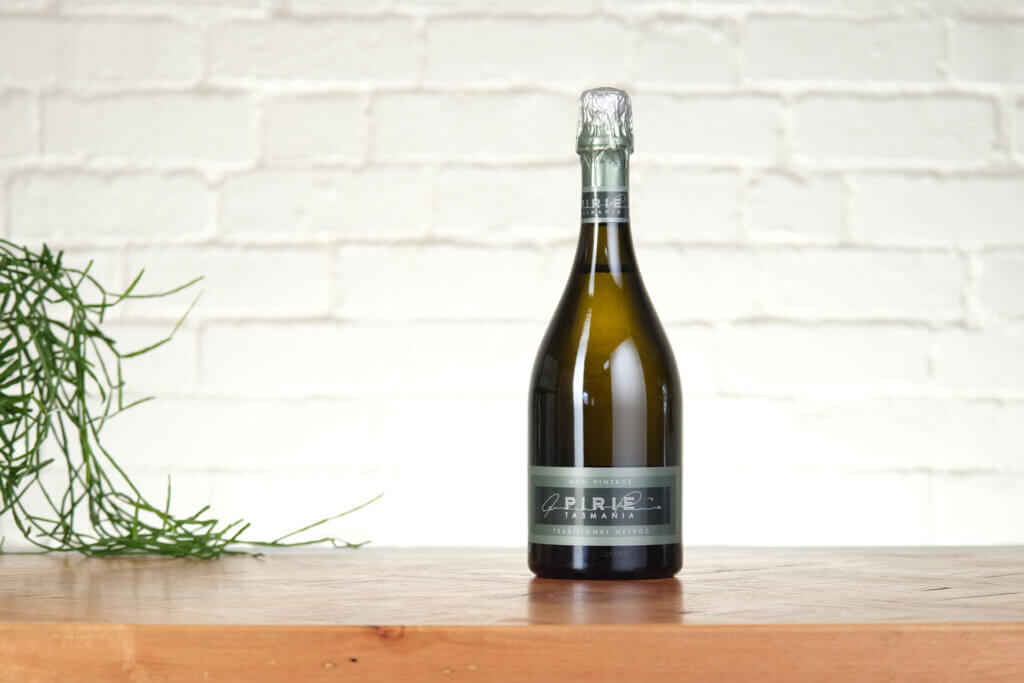
This was Williamson’s second top wine for the day, while McIntyre had it in her top three. “This wine had an incredibly elegant nose, jasmine, white flowers, mineral, chalky,” wrote Williamson. “The lemony acidity was immediately lifted and danced across the palate, but continued to have a pleasant grip, which accentuated the zesty sherbetty character of the wine that I think represented that minerality I found on the nose. The length was pleasingly long, and it had an interesting yoghurt sourness on the finish. I think you could linger over a few bottles over a nice summer afternoon and find many more things going on in the glass.” “A complex, more powerful style,” wrote Kate McIntyre. “Nutty with Brazil nuts and almonds – savoury and waxy (lanolin and beeswax) with honey on the nose, some lemon, a touch of red fruit. Fresh and layered on the palate – very good depth and length – some minerally notes and lots of sea spray and a touch of mushroom. Very complete and pleasing. Dry finish, and long and elegant.”
Experience the story – shop the wines at Finestro online cellar door.
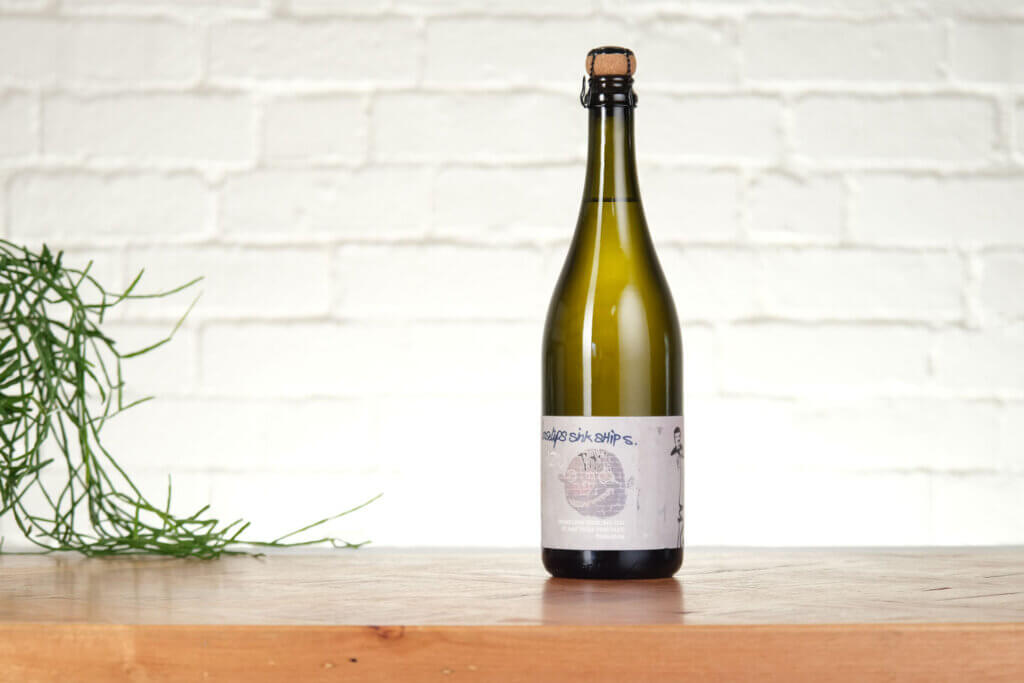
This was Williamson’s top wine of the tasting. “I found this to have quite pronounced lovely lemony mineral aromas, floral jasmine, and a touch of almond, which gave pleasing complexity,” she wrote. “It was immediately zippy on the palate, but gave way to a nice richness, a slight touch of honey that balanced really nicely with the acidity. There were definitely mineral aspects, chalk and limestone but a touch of marzipan created extra layers. I think this was a refreshing example that would please any Blanc de Blancs fans and would pair beautifully with oysters or raw fish but also has enough going on to not need anything to accompany it.”
Experience the story – shop the wines at Finestro online cellar door.

This was Vigier’s wine of the tasting. “Straight from the very first sniff, the potential of this wine becomes abundantly clear. Its presentation is awe-inspiring, with a package that commands attention. …From the vibrant reds of apple skins, strawberries and red plums to the luscious yellow stone fruits of peaches and nectarines. As the aromatic layers unfold, complexity reveals itself in subtle ways, showcasing the delightful interplay of secondary notes derived from lees contact, reminiscent of freshly baked croissants and dough, as well as the intriguing touch of oxidative handling. What truly astonishes is the sheer power emanating from the fruit profile, which harmoniously blends with the overall strength of the wine. Despite its multifaceted nature, the nose remains focused and precise…. The fine and creamy mousse glides effortlessly across the palate, while the mid-palate texture is simply irresistible, offering a tantalising fusion of ripe stone fruits and tangy, tart fruits. Both the flavour profile and texture of the wine exhibit a captivating complexity. …Its elegance and sophistication are undeniable… a truly distinguished and refined offering….”
Experience the story – shop the wines at Finestro online cellar door.

Nadeson and Carr both picked this in their top six. “This sparkling wine reveals an intricate dance of aromas – the subtle tartness of under-ripe fruit synergises with enticing biscuity and bready undertones,” wrote Nadeson. “The palate is luxurious richness, striking a balance with the restrained fruitiness, tactile grip and zesty acidity. The autolysis-induced palate builds complexity, enriching the wine’s character without overwhelming its intrinsic elegance.” “The colour is a medium/deep straw with a hint of bronze,” noted Carr. “Aromas of toast, sauteed mushroom and natural yoghurt on the nose, while the palate is round and soft with secondary age notes of sourdough and truffle. A good acid backbone, with dosage apparently a little high but overall good balance with a bright and crisp/clean finish. It’s an interesting, complex style retaining structural elegance and brightness.”
Experience the story – shop the wines at Finestro online cellar door.

Fryar placed this second on her top picks for the tasting. “This abounds with exotic cold climate chardonnay (including jasmine),” she wrote, “coupled with really elegant notes of autolysis… Very pretty, lifted nose with white flowers, and fresh cream. Notes of lanolin and yoghurt. Citrus and white flowers on the palate with a touch of passionfruit and lemon curd. This is a wine of elegance and great presence, which has gorgeous and really fine tannin on the palate. That acid tannin balance really adds to the mouth-watering nature of the wine.”
Experience the story – shop the wines at Finestro online cellar door.

This came one off the top spot for McCabe. “Red fruit and sweet generosity,” he wrote. “For me, it’s the most giving from the selection. Powerful with well-balanced sweet fruit, spice and a bit of skin/wood astringency to contain the wine. Pale, creamy, serious lees development. Strawberries, hedonistic and enjoyable if not the most intellectual, but who cares! I could happily drink this in the sunshine, with barbecued sausages if anything.”
Experience the story – shop the wines at Finestro online cellar door.
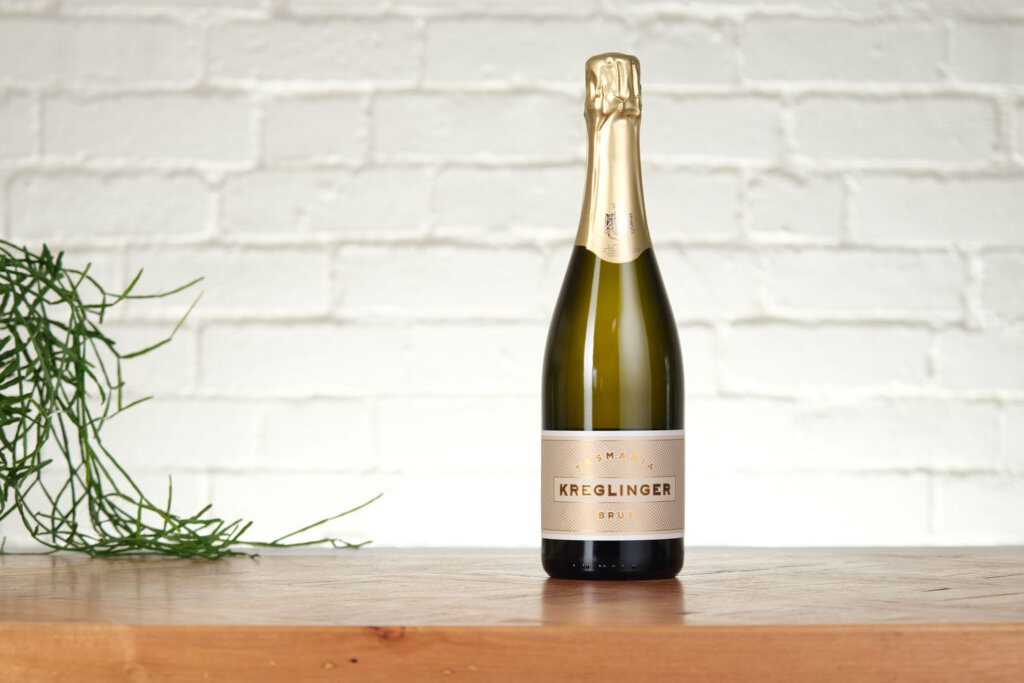
Vigier had this completing his top three. “This wine possesses a delightful personality, revealing an abundance of fruits on the nose. One can detect the presence of green fruits like apples and pears, accompanied by the enticing aromas of yellow stone fruits… Additionally, there are intriguing hints of spicy nashi pears. …Secondary notes derived from lees contact, impart yeasty and sour cream nuances, as well as autolysis characteristics. The influence of malolactic fermentation is also evident, contributing a subtle touch of buttery caramel. On the palate, this exhibits a pleasing lift… and the secondary notes become more pronounced, enhancing the overall complexity. The finish is where the weight of the fruits truly shines, complemented by a persistent freshness that carries through the texture, leaving a lasting impression. I particularly adore the elegant and racy nature of the wine in the finish, which is simultaneously structured and powerful. It embodies a classic style that is undeniably enjoyable to drink. The finish exudes a tight sensation, adding to the overall appeal of the wine.”
Experience the story – shop the wines at Finestro online cellar door.

Both Nadeson and Vigier included this in their top-six lists. “Rich aromas of orchard fruit are interwoven with enticing bready, yeasty undertones,” wrote Nadeson. “Another richer style with a level of dosage that would be a crowd pleaser but not too much that it becomes cloying. The sweetness is balanced with vibrant acidity and a touch of phenolic grip.” “Ageing has certainly added complexity to the wine, enhancing its overall quality,” noted Vigier. “The initial aromas on the nose are a delightful blend of primary green fruits like green apples and green pears. Alongside these, there are pristine white flowers such as white lilies, chamomile, and jasmine. The presence of minerals like wet stones and crushed rocks adds depth, while notes of root vegetables and earth, like mushrooms, contribute further complexity. The acidity on the mid-palate is a standout feature, lifting the entire wine and giving it a vibrant character…. The finish of the wine is wheaty and cereal-like… The addition of spicy pears, green olives, and pastry takes the finish to a whole new level, introducing a delightful complexity. The presence of grapefruit bitterness adds a refreshing twist. Personally, I am particularly fond of the savory finish, with its grainy spelt notes…”
Experience the story – shop the wines at Finestro online cellar door.

Vigier and McIntyre both gave this a top-six finish. “Restrained on the nose at first – lemon rind and sparklers burning – very concentrated yet elegant, lots of things we like to see in sparkling wine opening up to reveal more power,” wrote McIntyre. “Tangy, fine, lemon fruit with a touch of strawberry and beef stock cubes on the palate. Good weight and length. Lots of salinity.” “It possesses a pure and chiselled character, elegantly displaying depth and complexity,” noted Vigier. “The aromas on the nose initially showcase green fruits… which then transition into riper stone fruits… There is a prominent presence of white flowers and minerals, along with elements of crushed rock. A cool and refreshing sensation permeates the fruits, almost reminiscent of mint or fennel tops. The secondary aromas are present but more subdued in the background. …It is a wine that could easily be overlooked amidst more robust options, but its …subtle complexities make it a standout choice.”
Experience the story – shop the wines at Finestro online cellar door.
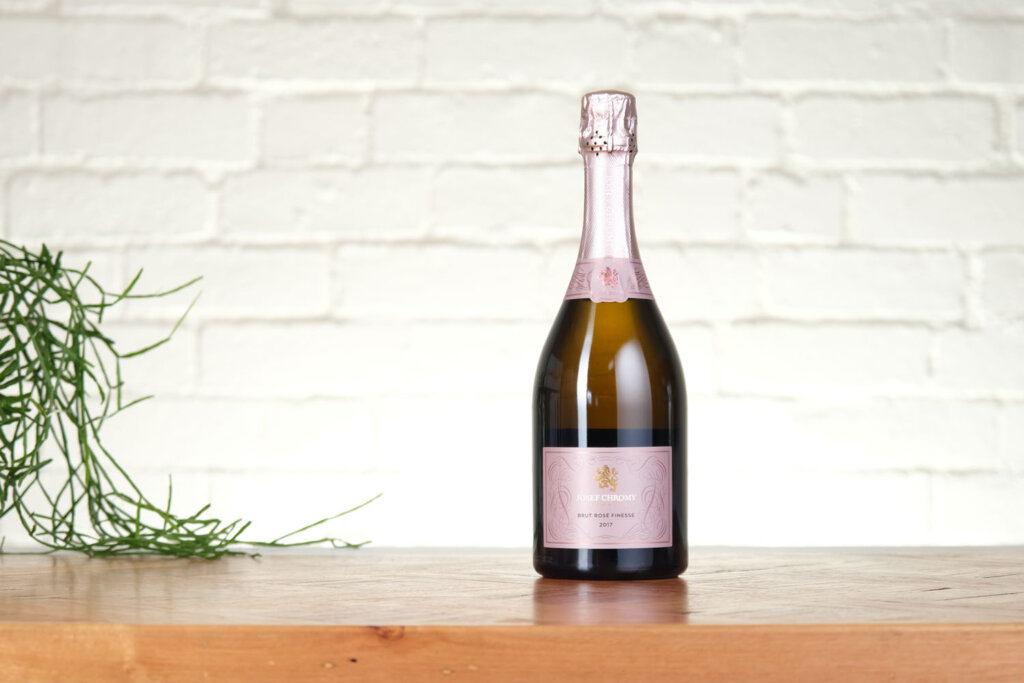
This completed Nadeson’s top three. “This sparkling rosé wine enchants at first sight with its inviting blush hues. On the nose, it releases a bouquet of fresh red berries, floral hints, a whisper of lime leaf all intertwined with bready biscuity deliciousness. The palate is an intricate play of delicately sweet fruit notes and lively acidity, underscored by subtle minerality. A charming and vivacious sparkling rosé, and a true celebration in a glass.”
Experience the story – shop the wines at Finestro online cellar door.

McCabe chose this to fill out his top three selections. “A Serious rosé style with good if slightly assertive acidity,” he wrote. “Berries and fruit compote… could use a bit more spice to round out… be great with a game tartare or game and sour berry dish. Onions skin colour, good bead, some dried fruit. Intense acid, small wild berries, kind of savoury and in that regard one of the more food friendly examples from the line-up.”
Experience the story – shop the wines at Finestro online cellar door.

This sat just outside McIntyre’s top three wines for the tasting. “Such a savoury wine,” she wrote. “First impression is Pyengana cloth-wrapped cheddar on the nose, a little fino sherry. And lemon oil, cumquats, sea spray, miso on the nose and palate. Dry, fine, quite long. Fresh and very interesting. A very dry seaweedy savoury style – I like it.”
Experience the story – shop the wines at Finestro online cellar door.

“There were some really ripe stone fruit and apples on the nose complemented by butter biscuits and I could almost smell the rich creaminess before I even tasted it,” wrote Williamson in picking this in her top six. “Very lively juicy acid, like lime sherbet, but also lots of plums and red apple, which evoked feelings of a pinot-dominant blend. It was full of the combination of biscuit, curd and meringue that makes an all too delicious dessert, and the acid just kept going on and on and on. Anyone with a preference for Blanc de Noirs I’m sure would be happy with this, and I think it would perfectly accompany any meal with spice and richness (duck is in my mind).”
Experience the story – shop the wines at Finestro online cellar door.

Fryar had this sitting just out of her top-three podium finish. “Gorgeously lifted nose,” she wrote. “Pink and white florals (rose petal and jasmine). I loved the savoury oak notes on the palate but still very fine. Great layers of fruit. Fresh cream from yeast. And a wonderful finish.”
Experience the story – shop the wines at Finestro online cellar door.
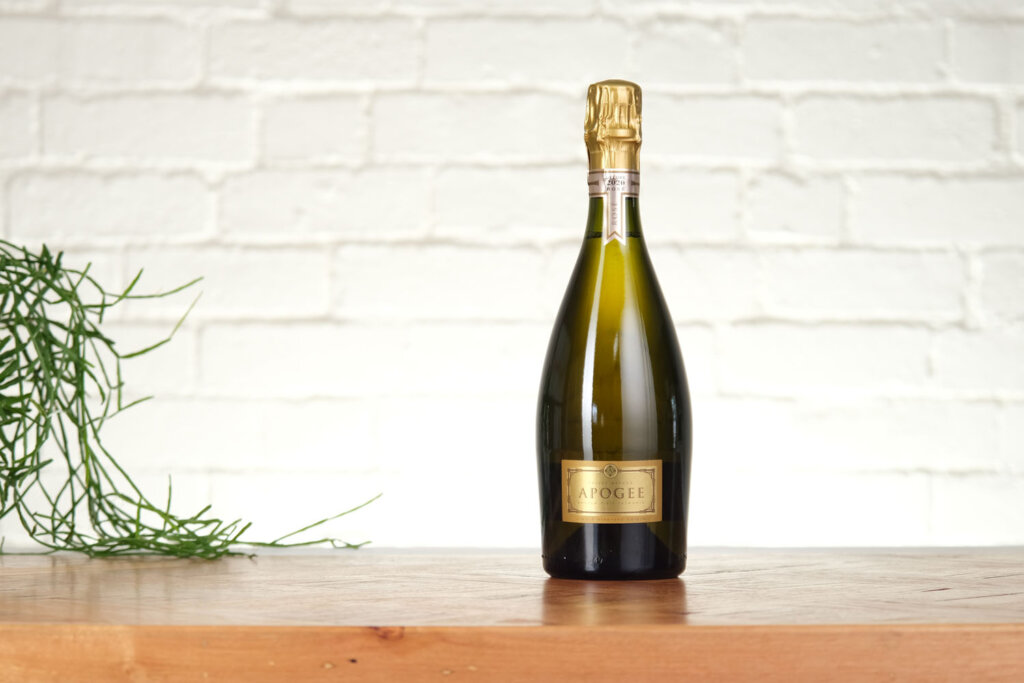
This came just outside the top three wines of the tasting for Carr: “A pale rose hue,” he noted. “Aromas of fresh red berry fruits reminiscent of raspberry/strawberry, with the red berry fruity impact rolling through to the palate. Lean and tightly structured, restrained secondaries, good acid line and comes together nicely. It’s a fresher, more fruity style that’s balanced and refreshingly crisp.”
Experience the story – shop the wines at Finestro online cellar door.

Both McCabe and Carr included this in their top six. “Fresh cut-apple finish and very moreish, some oak/ biscuit, almost Bollinger-like,” wrote McCabe. “Fresh red apple palate with apple pie spice and well-integrated structure. Aldehyde and green almond nose, lots of power but perhaps a bit closed on fruit expression. Excellent wine with mineral tension that needs some food – lobster or some kind of scallop mornay.” “Many of the classics of toast /oyster and mushroom are on the nose,” noted Carr. “On the palate, rich and riper fruits with good viscosity. A strong but not excessive acid line. Well-structured and good flavour persistence. Overall, it’s a lovely complex and vibrant wine – gold medal stuff.”
Experience the story – shop the wines at Finestro online cellar door.

“A classic Australian style that started with struck match and sulphide, but it blew off,” wrote Fryar in giving this a top-six finish. “And once it did, it revealed a beautiful nose. Complex and rich, mainly derived from bottle age and autolysis. And the palate was complex and rich. Very fine bead. Great structure from the first entry point on the palate to the long, elegant finish. Layers and layers of fruit on the mid-palate: lemon curd, oyster shell and strawberry fruit.”
Experience the story – shop the wines at Finestro online cellar door.

McIntyre picked this amongst her favourite six wines of the tasting. “Palest of pink colour with a lovely, elegant nose of rose, red apple, strawberry, mushrooms,” she wrote. “Refined yet quite pure on the palate – lots of fresh acidity with some attractive red fruit and a little caramelised sugar. Tangy and delicious. Very classy. Just had to keep tasting it!”
Experience the story – shop the wines at Finestro online cellar door.

This made Fryar’s top-six list for the wines of the tasting: “A lot of sulphide notes that blow off but reveal lifted vanilla cream and lemon curd,” she wrote. “Lovely notes of toast, brioche and a touch of brulée. They flow seamlessly through the palate. And this has really attractive very fine tannins, with a lovely sorbet finish. A beautiful balance between.”
Experience the story – shop the wines at Finestro online cellar door.

This completed Williamson’s top six. “I found ripe juicy apple and almonds on the nose,” she wrote. “It was pretty and elegant, and the acid just kind of danced around your mouth. There was so much going on, nougat, sweet tart shell, jasmine flowers, chalky minerality. The lemony acidity had such a nice grip and as we found in a lot of these wines that grip just carried the length for ages. A delicious aperitif but I could also see this being paired with lemon or frangipane tart!”
Experience the story – shop the wines at Finestro online cellar door.

This rounded out Vigier’s top six. “The complexity of this wine is indeed apparent from the very beginning. The nose is filled with a powerful presence of secondary aromatics… There are smoky autolysis notes that add depth, along with creamy and buttery elements… A touch of sweet spices further enhances the overall aromatic profile. …I can detect notes of melon, pineapple, and ripe stone fruits… The oily character of the wine is intriguing, showcasing a great concentration derived from the fruit, as well as the meticulous work that went into crafting this wine. …This wine follows an older style of the méthode Champenoise, where the focus is placed more on the ageing process rather than solely relying on the fruit’s inherent characteristics. This approach adds a certain depth and complexity that is appreciated by those who enjoy classic prestige cuvées.”
Experience the story – shop the wines at Finestro online cellar door.
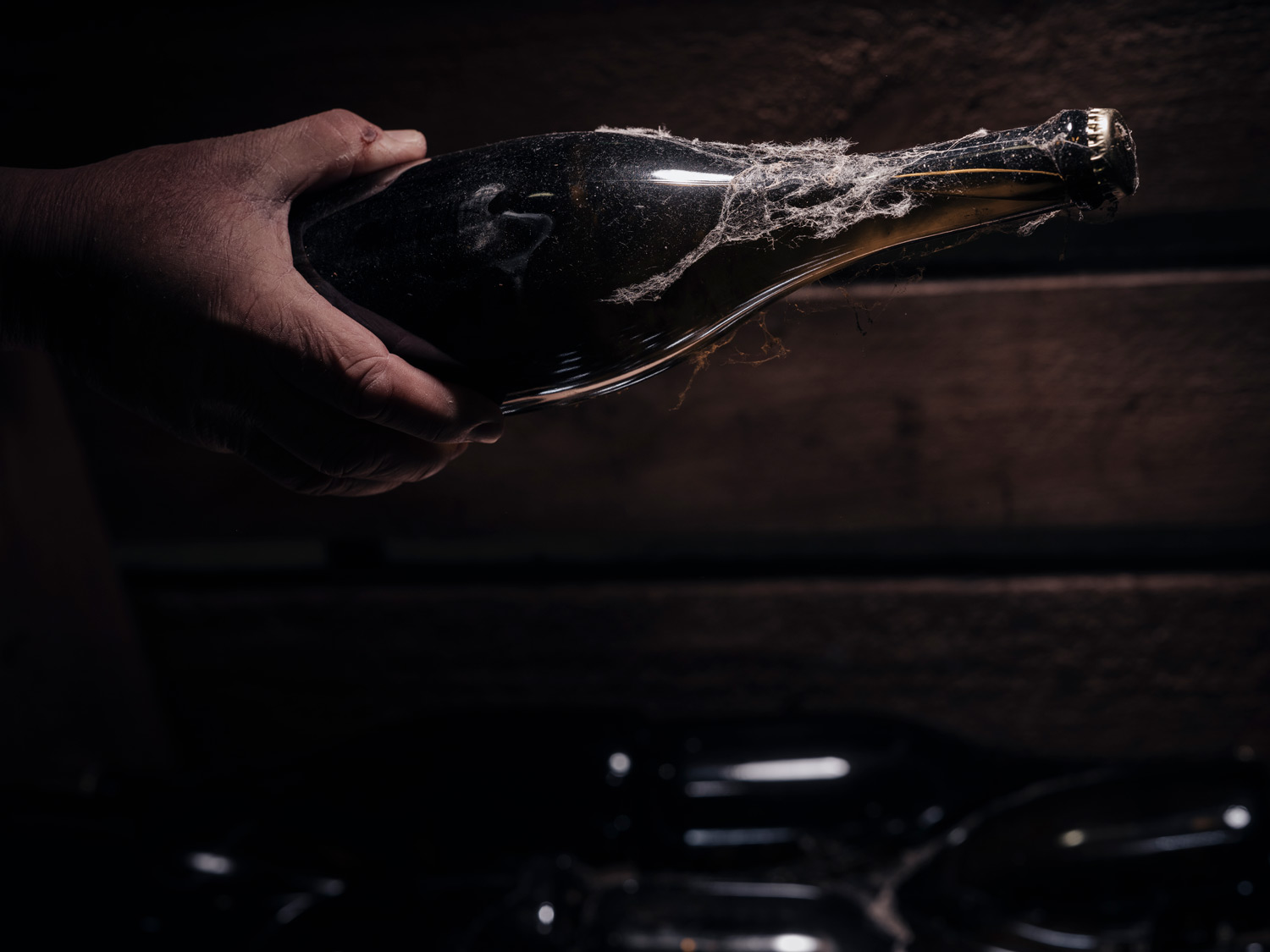
Sparkling wine in this country has a long history, from traditional method – à la Champagne – sparkling wines from the very early days, through the birth of that peculiarly Australian invention of sparkling red (nee Burgundy) towards the end of the 1800s – perfected by Hans Irvine of Great Western – and on to the mid-20th century technological revolution that allowed for controlled mass production and consistency.
Temperature-controlled pressure tanks meant that rather than a secondary bottle fermentation to produce the bubbles, this process was conducted in tank and then bottled. It doesn’t produce the same bready, yeasty aromas that Champagne (and wines made with that method) have, as there is no extended contact with the wine on its lees (the dead yeast cells that add those bakery notes and build texture), but it’s very efficient and produces bright, fruity sparkling wine. And that’s a winning style for many.
That process is called the Charmat method, or the Italians prefer to call it the Martinotti method (metodo Martinotti), with Federico Martinotti pioneering the process, and Eugène Charmat refining it with a new patent. That process changed sparkling production around the world, and the technology advances changed the course of Australian wine, but it could never erase the history or reach the heights of the traditional method.
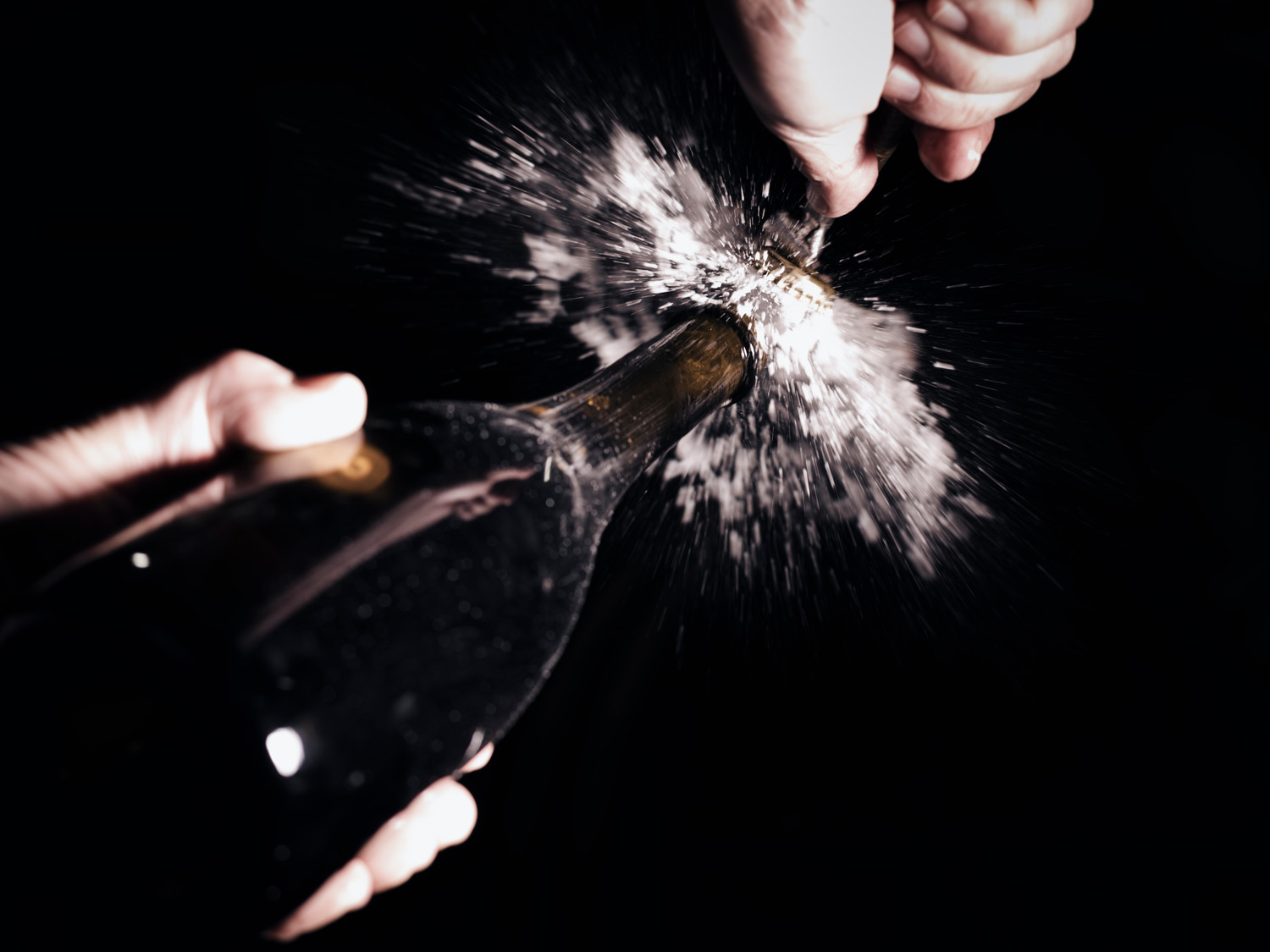
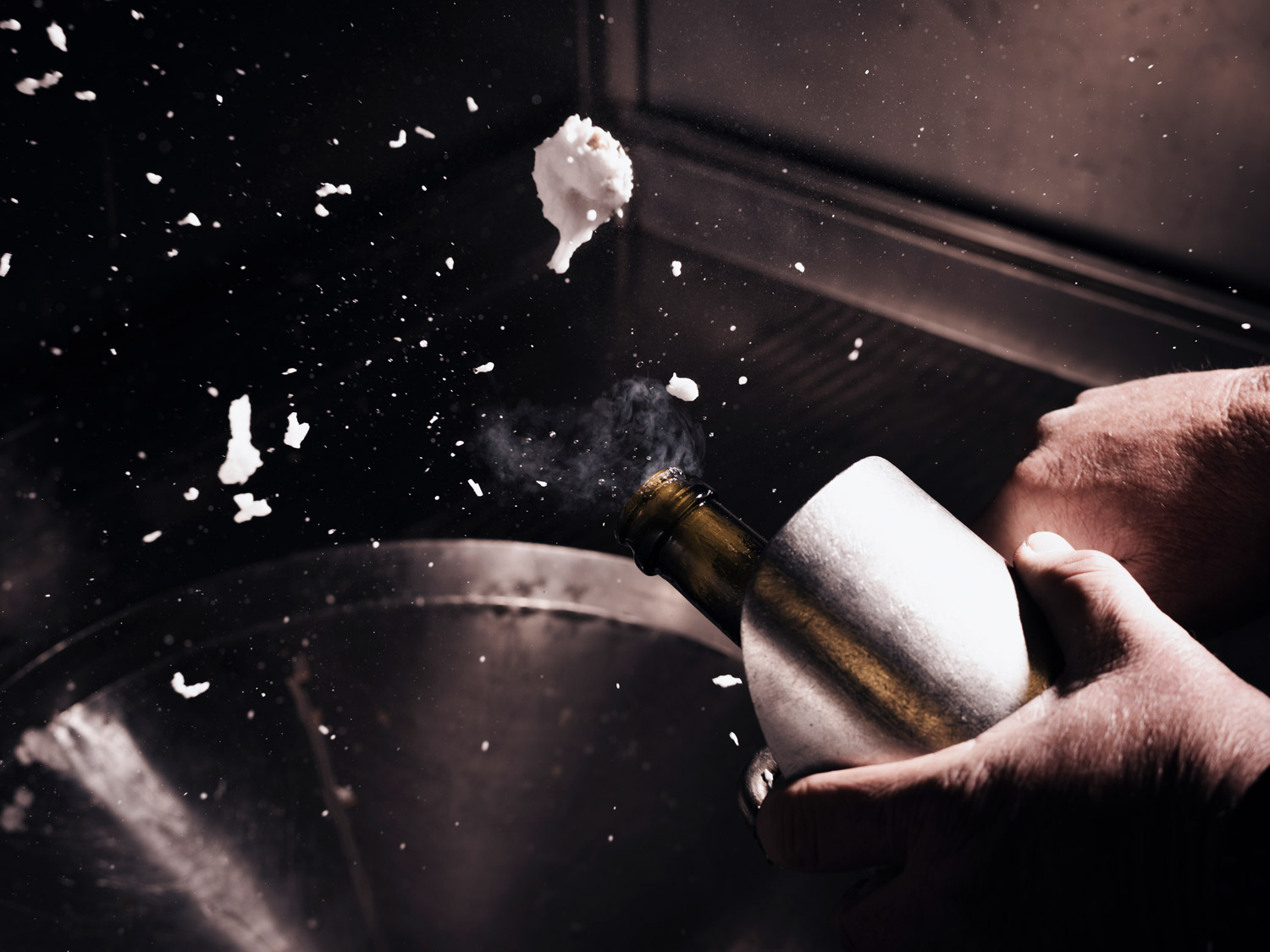
Champagne remained the pinnacle, the platonic ideal that all serious-minded producers aspired to. In Lombardy, Italy, Franciacorta was ambitiously pitched as a wine that could rival the French, with the first metodo classico wines released in 1961. Today, from a small legally controlled growing area, it produces nearly 18 million bottles a year – mainly chardonnay and pinot noir, with some pinot bianco (pinot blanc). That’s a bit of fizz, but it is dwarfed by the up to 400 million bottles, give or take, that are produced annually in Champagne.
In the New World, Champagne makers established outposts around the world, notably Moët & Chandon. The then president of arguably Champagne’s most famous house, Robert Jean de Vogüé pushed to the far horizons to extend their brand. In 1959, a vineyard and winery were established in Argentina. In 1973, California and Brazil got their own Domaine Chandon (now just Chandon) setups, while the Australian operation was established in 1986 in the Yarra Valley (China and India now fill out the stable).
At that time, the Yarra Valley, Macedon and the Adelaide Hills were all seen as prime sparkling wine territory. As was Tasmania, but what the island state lacked at that time was the kind of viticulture and winemaking networks and infrastructure that the other states had. Nonetheless, the suitably cool climate and untapped potential were huge drawcards for making both table and sparkling wines from chardonnay and pinot noir.
“We kept getting these green, herbaceous characters almost to a cabbage-y stage in a cool year, which were just undesirable,” Wiltshire’s transcript reads. “I’d resolved cabernet had to go but would keep it there while we were producing some cash flow to work on the pinots and chardonnays, and a selection of clones of them. And from that I thought that, well, we’re going to get the occasional bad year in this area, we need to use that material for a different end use in those cooler years. And sparkling wine seemed to be the way to go.”
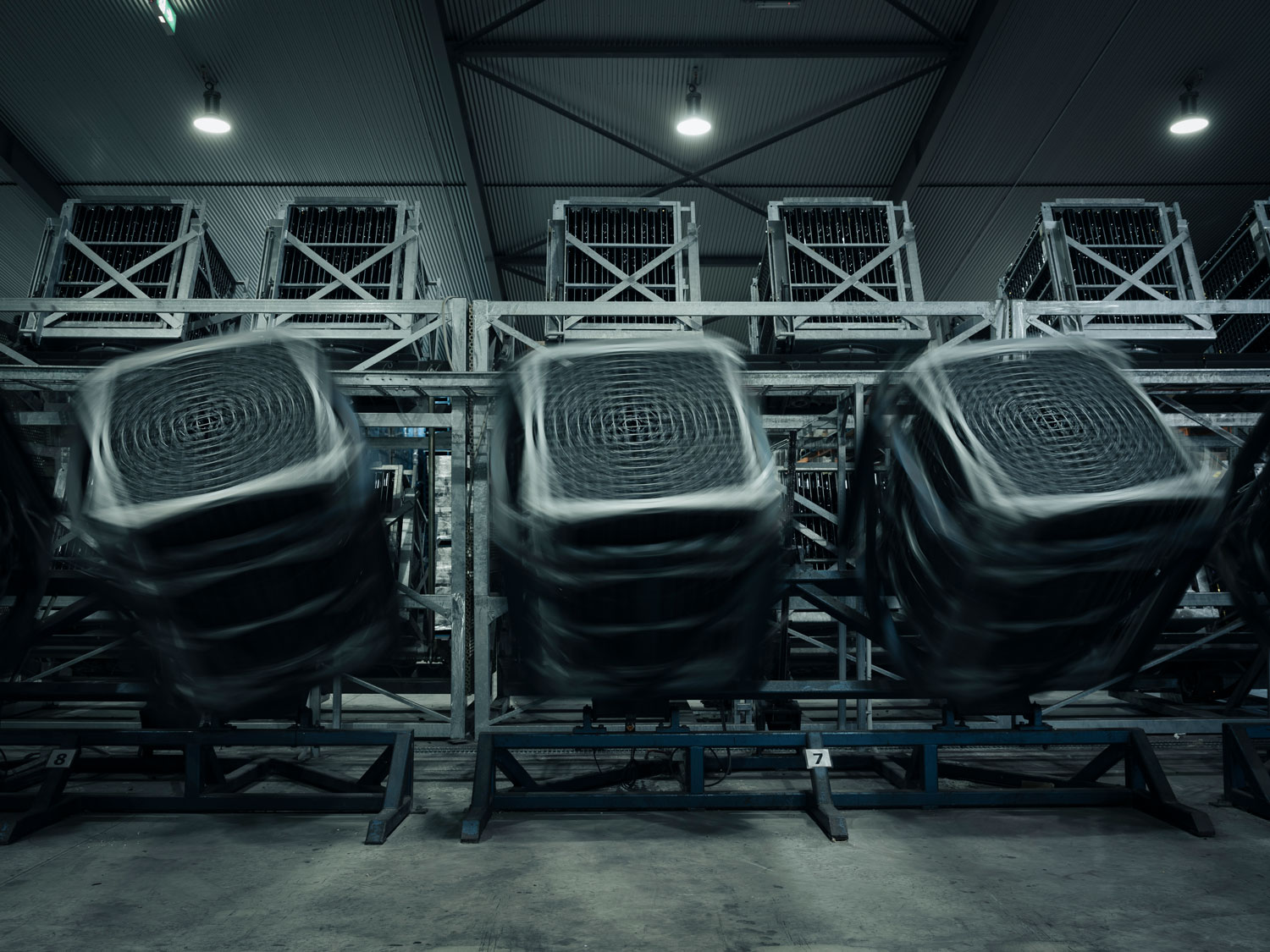
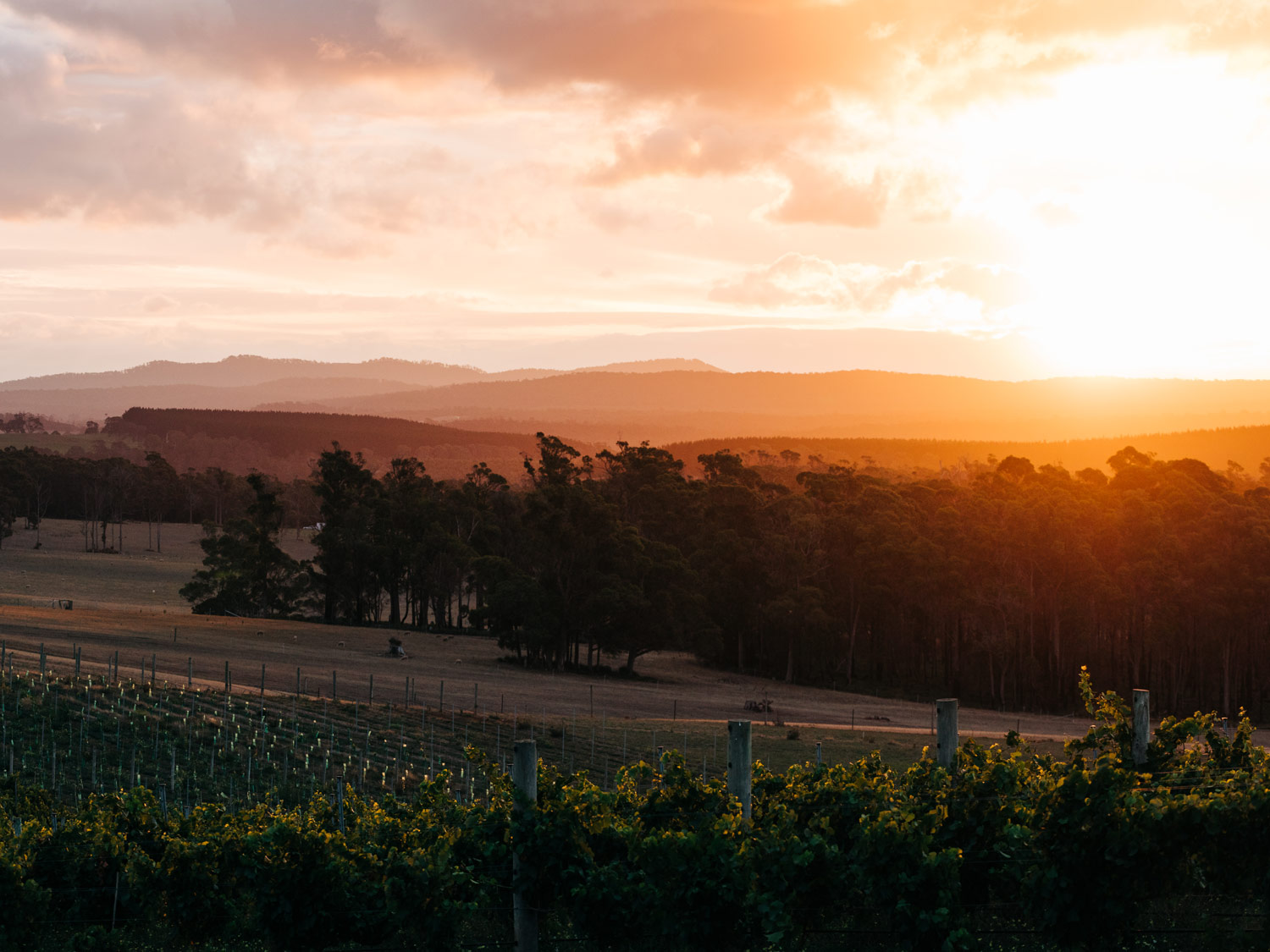
However, Tasmania rather got off on the wrong varietal footing. Red Bordeaux varieties were seen as a prime candidate for Tasmania in the 1970s and 80s. That was largely due to Graham Wiltshire planting it (he found it hard to source much other than shiraz and cabernet, and he was not interested in the former) and making a trophy winning wine in 1976 (the earlier years were made in his laundry) at Royal Melbourne, sharing top points with Cape Mentelle. What followed was another lauded wine under the Heemskerk banner, which he established with Bill Fesq and Colin Haselgrove.
That last wine came from the Legana property that Wiltshire had planted in the 60s, but the Heemskerk brand was built around 1975 plantings in Pipers River. The vineyard happened to be adjacent to a vineyard planted around the same time by brothers Andrew and David Pirie. It’s fair to say that while cabernet was still occupying the spotlight, these chance neighbours are the foundation stones of Tasmanian sparkling wine.
An investment by Champagne Louis Roederer, who, like Moët & Chandon, were pursuing new expressions from their ancestral methods, saw a partnership with Heemskerk formed in 1986. Chardonnay had already been planted, with Wiltshire and the Piries pooling resources and sharing vine material, while the first Heemskerk Pinot Noir was released in 1982. That vines material came from Haselgrove who had it planted at Château Reynella in McLaren Vale, which was entirely unsuitable territory.
The CSIRO later helped bolster the clonal mix as Wiltshire sought to find better performing material in their site, with the Mariafeld clone that Haselgrove had sent making very light wines. For Wiltshire, sparkling wine was almost an accident. His biggest challenge at the time was obtaining both reasonable yields and ripe fruit flavours, and sparkling wine provided a fallback, as he related for an oral history transcript that is kept by the State Library of South Australia.
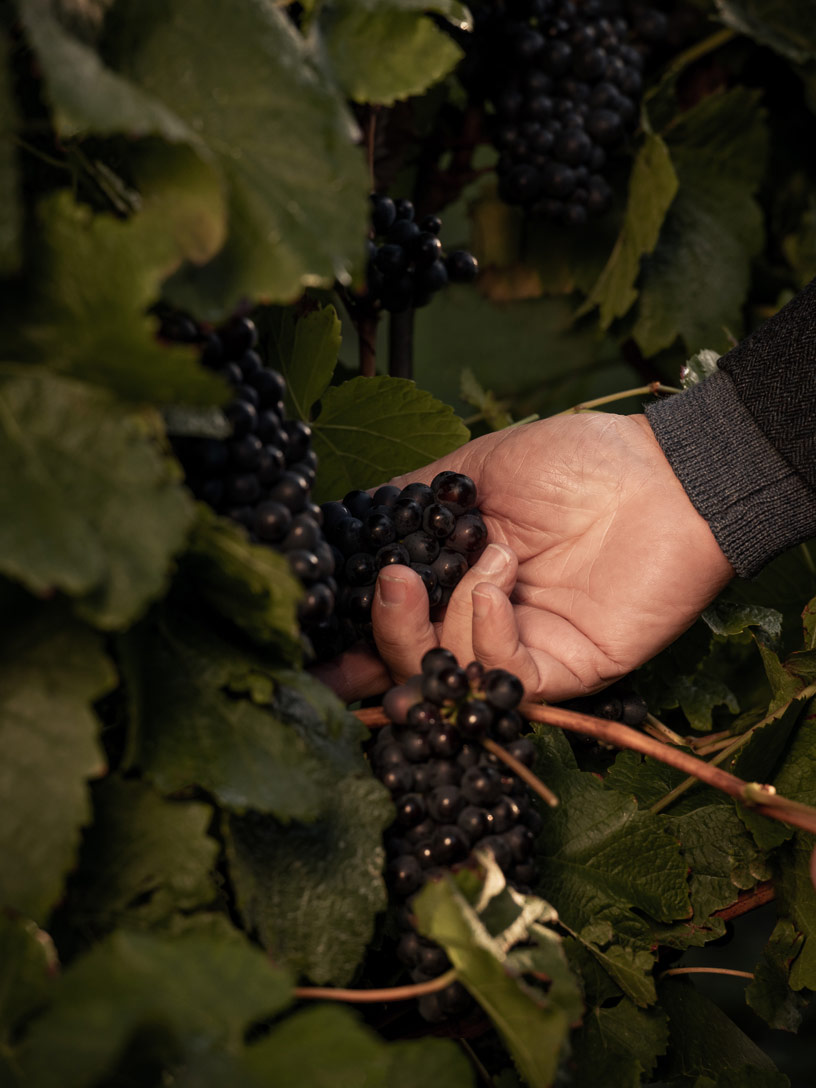
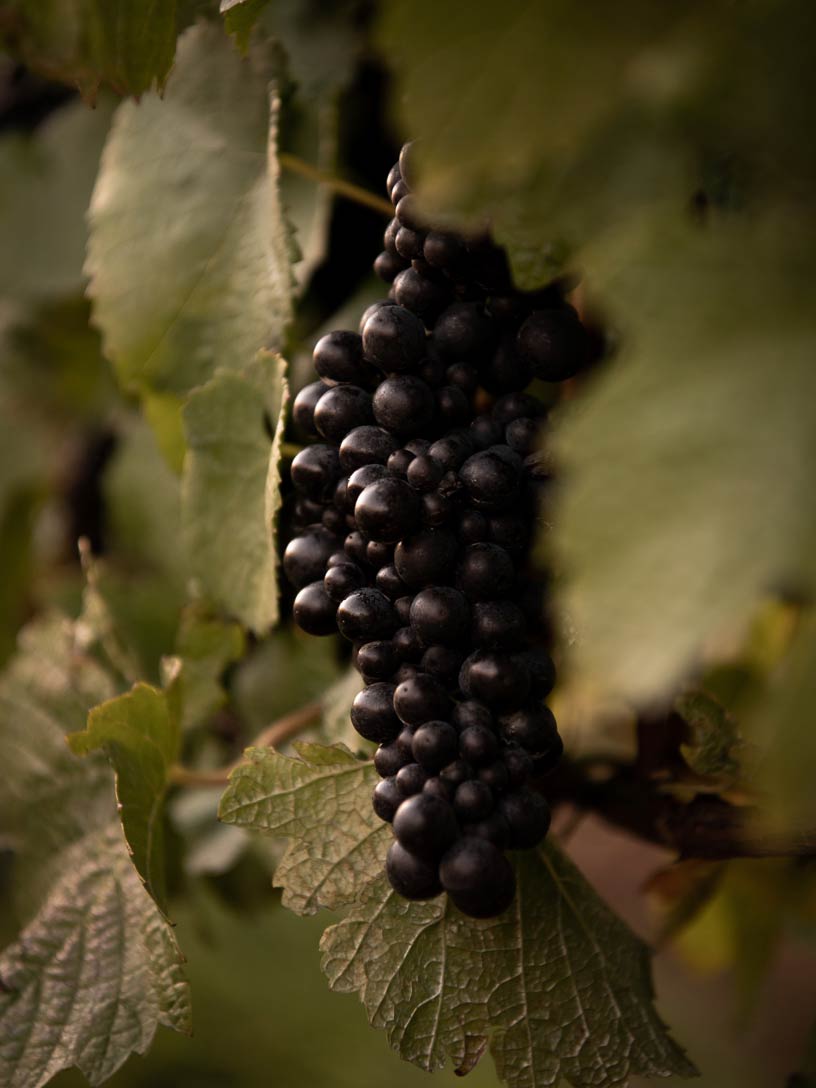
“We kept getting these green, herbaceous characters almost to a cabbage-y stage in a cool year, which were just undesirable,” Wiltshire’s transcript reads. “I’d resolved cabernet had to go but would keep it there while we were producing some cash flow to work on the pinots and chardonnays, and a selection of clones of them. And from that I thought that, well, we’re going to get the occasional bad year in this area, we need to use that material for a different end use in those cooler years. And sparkling wine seemed to be the way to go.”
That hedging of bets led Wiltshire to Louis Roederer through Fesq, whose Sydney wine merchant business had the Roederer agency at the time. Samples of base wines were sent, and their suitability to sparkling wine encouraged Jean-Claude Rouzard to visit Tasmania. “They were interested in the new world because at that stage they’d just bought some land in California in Anderson Valley and were doing some experimental work there. So, they were interested in another area, much to the disgust of the older members of the family that Rousaud [sic] was adventurous and doing things like this.”
That venture saw chardonnay and pinot noir planted in earnest, with the first base wine to reach the standards set by the French house accepted in 1989. That vintage wine was released in 1991 after two years lees maturation. That first Jansz (named after Abel Janszoon Tasman) cuvée caused quite a stir, but Wiltshire was not long in the partnership after that, having subsequently vocally disagreed with the French winemaker sent to oversee production. Heemskerk was later sold to Joseph Chromy, who then established vineyards in the West Tamar, with Wiltshire onboard, that were eventually sold to Pipers Brook.
Another of Tasmania’s key founding sparkling makers is Clover Hill, which was first established on the site of an old dairy farm in Lebrina (south of Pipers Brook) in 1986 by Victoria’s Taltarni (Pyenees) with Dominique Portet at the helm. Over on the east coast, which is still somewhat isolated from the bulk of the wine industry, Claudio Radenti launched his Radenti sparkling from the Freycinet Vineyard in Bicheno – the first from that area.
The 1993 vintage was also the first made by Steve Lubiana – under his Stefano Lubiana label – from pinot noir and chardonnay vines he had planted in 1990 near Granton in a unique pocket of the Derwent Valley. Lubiana is from a long line of winemakers, extending back through his heritage in Italy, then to South Australia where his winemaker father settled. It was the desire to pursue pinot and chardonnay and to make refined sparklings that led him south, and he now makes a significant range.
The Pirie brother’s brand had grown considerably by the late 1990s, with the ‘Pirie’ sparkling launched in 1995, and the acquisition of significant vineyards from Chromy – who would go on to launch his eponymous label – was part of a push to float the company. Andrew Pirie, who had spearheaded production, left the company in 2003. It has been majority owned by the de moor family since 2000 under the Kreglinger banner, while the Pirie brand has been owned by Brown Brothers for well over a decade.
At the turn of the millennium, the sparkling race was hotting up, with Hardys increasing their interests. They bet on both the Yarra Valley with Yarra Burn and Tasmania, launching Bay of Fires in 2001 after sourcing Tasmanian fruit for some years prior. Ed Carr headed up sparkling operations then, as he does now (Accolade is the current parent company), and he recalls that when he toured Tasmania in 1988 while at Penfolds there were just 46 hectares of vines planted.
In 1995, after Carr left his role as sparkling maker at Penfolds, The House of Arras was born under the old Hardys banner in 1995. The first all-Tasmanian vintage wine was made in 1998. Arras has gone on to become celebrated both domestically and internationally. In fact, the awards extend to over 100 trophies and nearly 300 gold medals, notably being awarded the world’s best sparkling in 2020 for a late disgorged wine, dislodging such Champagne greats as Krug in the process.
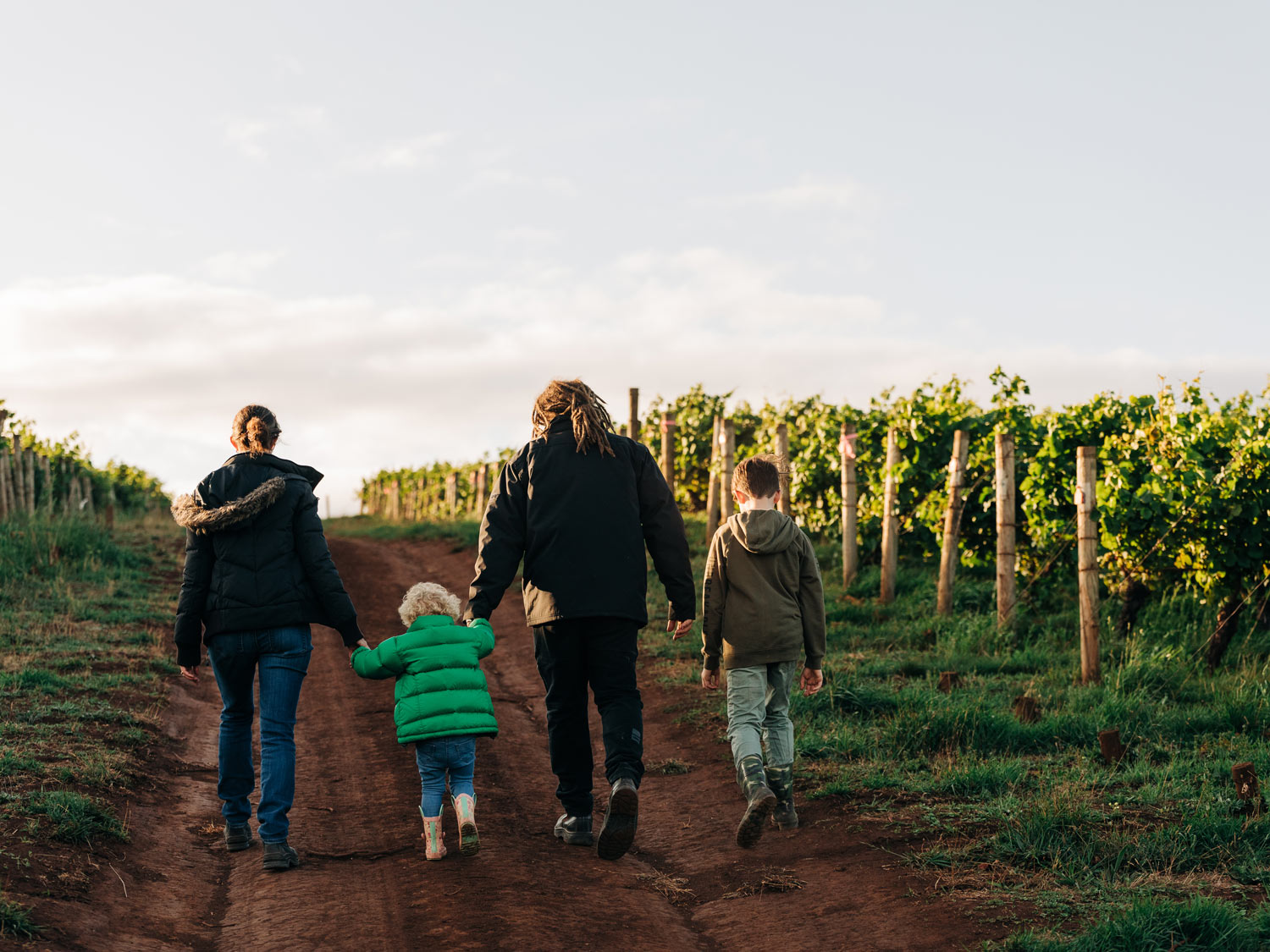
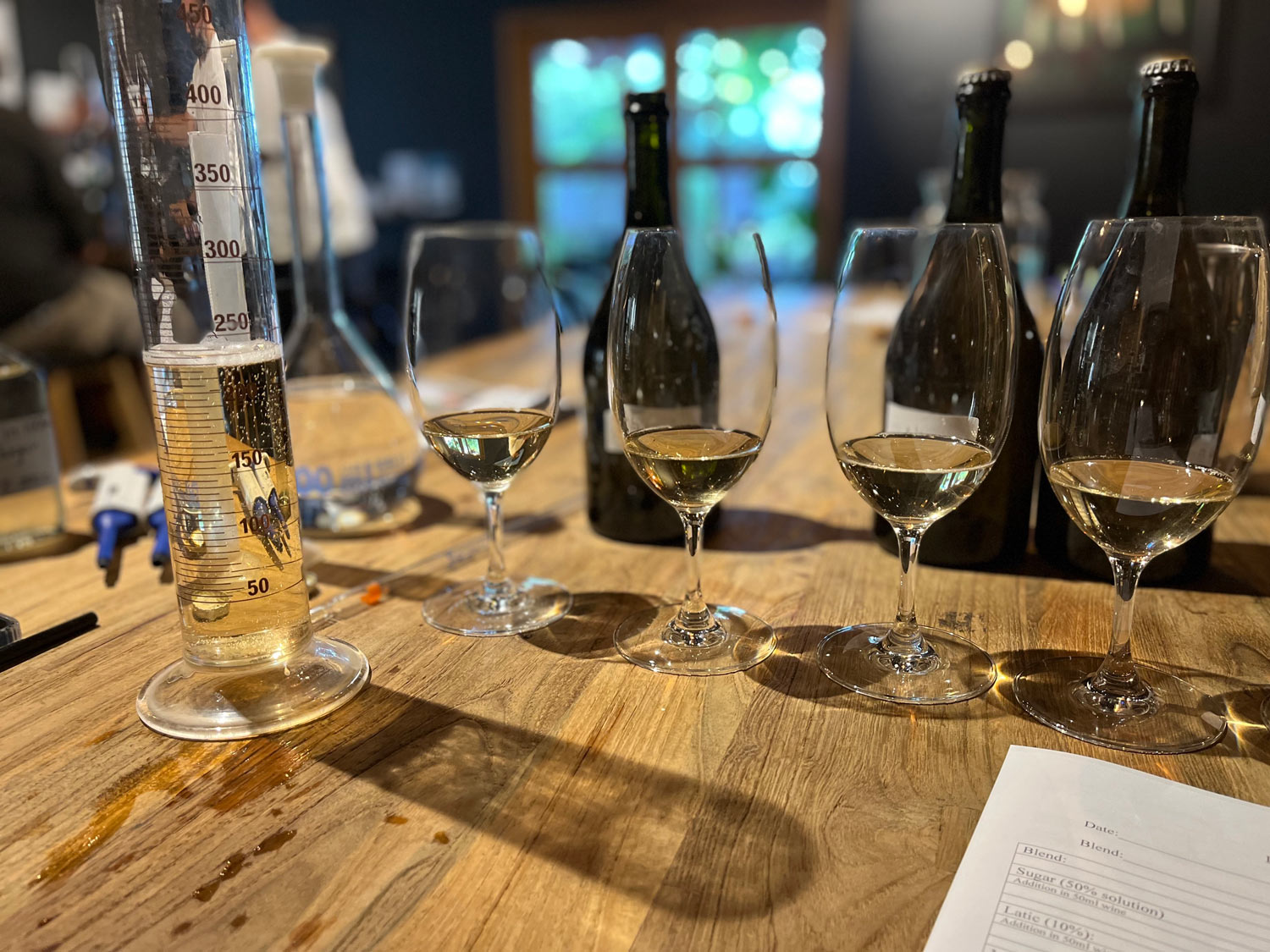
The Bay of Fires/Arras operation has also provided somewhat of an academy, with former head winemakers like Peter Dredge going on to make leading sparkling for Meadowbank, while Fran Austin spent almost a decade at Bay of Fires, leaving in 2011 to join her husband Shane Holloway on their pioneering Delamere vineyard in Pipers River. That site was planted in 1982 solely to pinot noir and chardonnay and at an unusually high density for the time (7,500 vines per hectare), and it now produces a range of still and sparkling wines.
Even after a glittering career, Andrew Pirie was not quite done with sparkling, planting his Apogee vineyard in 2008. Armed with more precise climate data and a firm belief that small is beautiful, planting what he calls a “grand cru sparkling site” near Lebrina. Today, this combination of larger company investment and smaller, family-owned enterprises shapes the Tasmanian sparkling scene, reflecting a diverse landscape.
“I think in Tasmania for the last 20 or so years we have seen increasing focus on both vineyards and winemaking to produce premium sparkling styles,” says Carr. “The result of which is Tasmania becoming a globally recognised region for world-class sparkling wine. So, in addition to the recognition of these wines in general of being such high quality, the consumer now has a great choice of consistent styles that suit their personal taste and preferred price point.”
Before launching her critically acclaimed Bellebonne label, Natalie Fryar worked for almost a decade and a half heading up Jansz when the Hill-Smith family of Yalumba took on the brand. “When I first arrived in Tasmania,” she says, “it was such a small industry and it was going through the transition of a lot of wonderful but small hobbyists… people who started a little wine label, a little vineyard as their second life. There were hardly any professional winemakers on the island and there were, I think, less than four actual viticulturists on the island.”
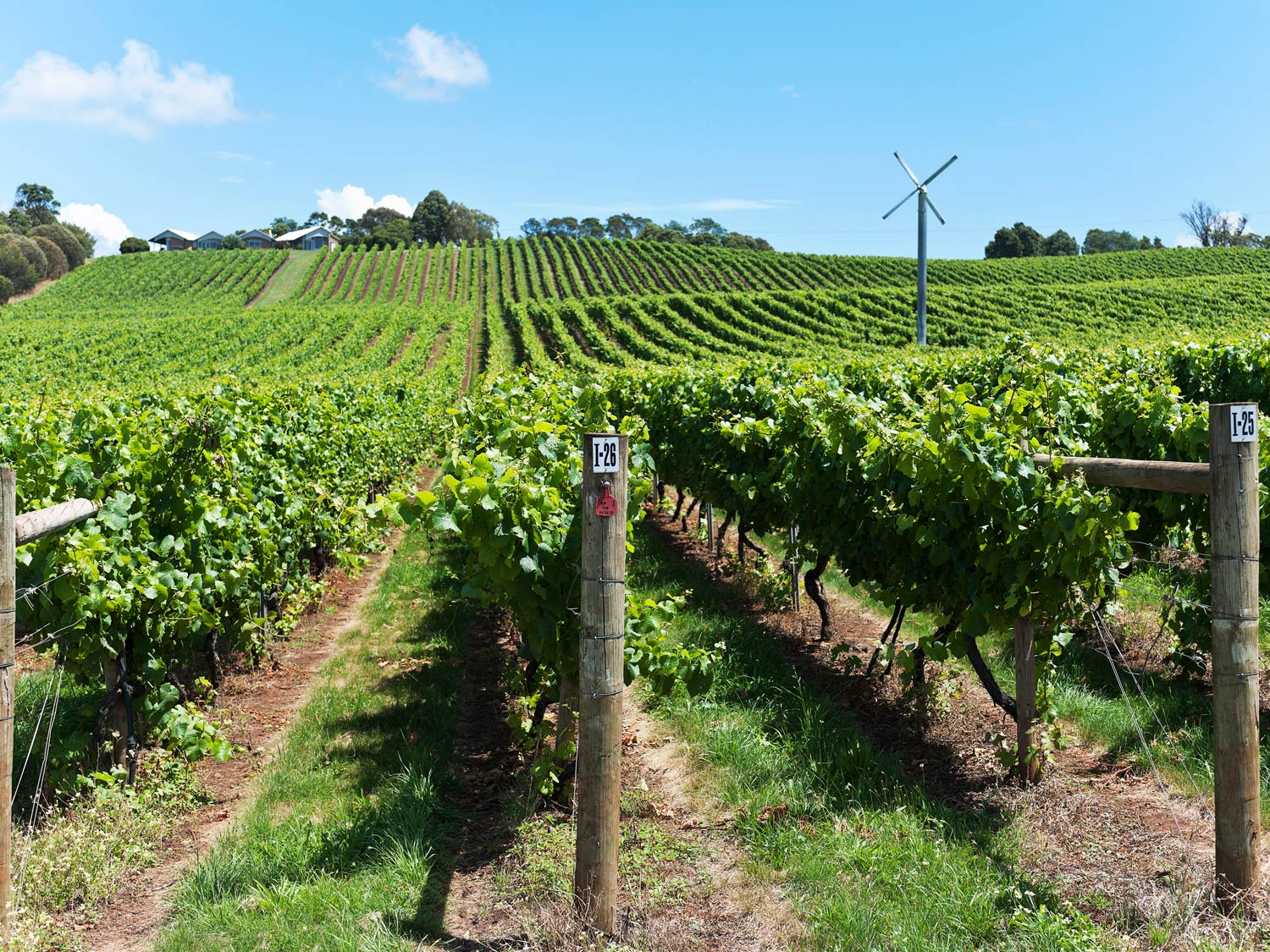
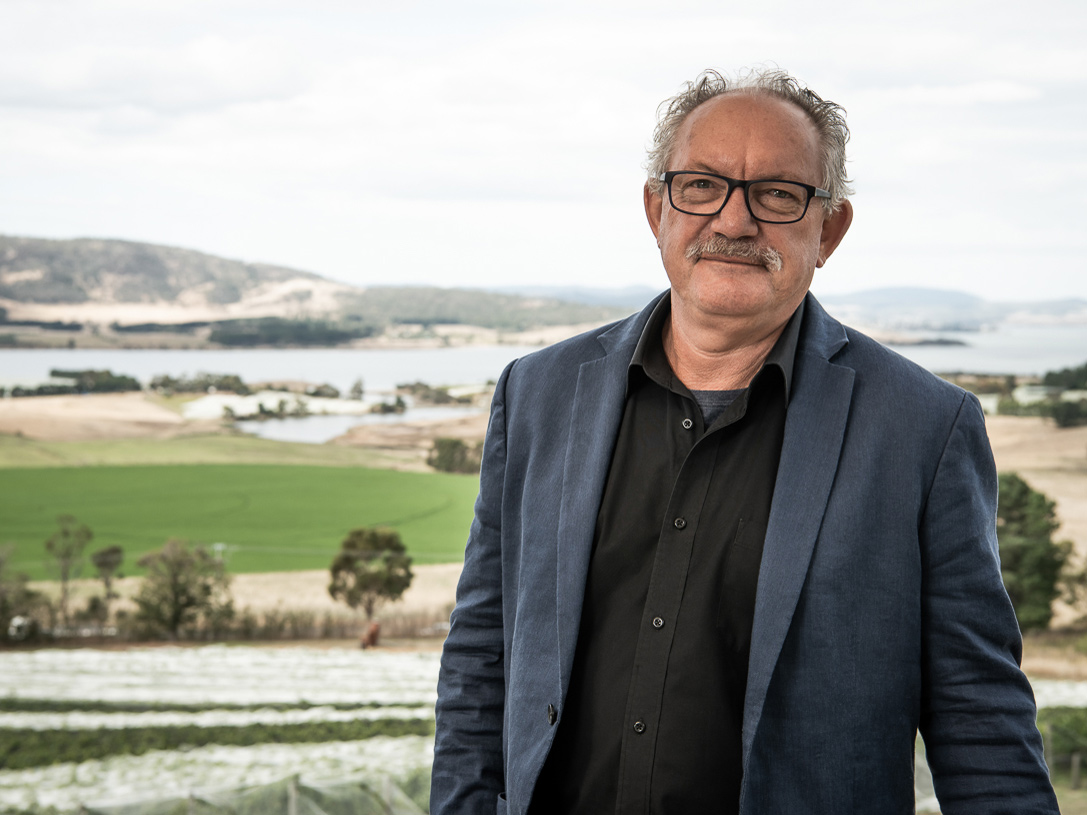
Carr notes that around 40 per cent of Tasmania’s wine production, which now covers over 2,000 hectares, is destined for sparkling wine, with strong domestic support across the price points and styles, but notably the international market is showing progressive growth. “For a wine brand to be truly successful, it must earn its ‘street cred’ by continually producing wine of high standard and building on that recognition over time,” he says.
That’s a process that Carr doesn’t see ever ceasing, with quality and character gains still to be made as the collective experience grows, vines mature, and suitable new sites become productive. Those gains are also being constantly made in the winemaking process. “We’ve also observed many wines with increased age in tirage gain exciting levels of complexity and interest, which highlights the great longevity of the wines and future potential to produce prestige wines,” he says.
“I think in Tasmania for the last 20 or so years we have seen increasing focus on both vineyards and winemaking to produce premium sparkling styles. The result of which is Tasmania becoming a globally recognised region for world-class sparkling wine. So, in addition to the recognition of these wines in general of being such high quality, the consumer now has a great choice of consistent styles that suit their personal taste and preferred price point.”
That collective experience has certainly grown, says Fryar, and so has the investment. “The changes that I’ve seen in the last 23 years have been dramatic, really, really dramatic. …People are really putting their money where their mouth is. …It has just increased in dynamism, in professionalism, and in new young people coming in with a passion for cool climate Australian wines that are passionate about sparkling… That shift in winemaking passion and winemaking style has been fantastic to watch.”
While Fryar is nearing two and a half decades making sparkling in Tasmania, with additional experience on the mainland, she emphasises that there is so much still to learn both personally and as an industry. “You just want to keep exploring, keep learning, keep thinking, keep trying…
“The thing is, it can get real technical, but the reality is it can be technical but absolutely beautiful at the same time. We’re all here for that second part. We get this incredible even ripening and it means we get such powerful fruit expression at lower sugar levels. And that means the intensity of fruit in a Tasmanian sparkling wine is astounding. We’re not here because we’re technical nerds, we’re here because the wines are beautiful, and they make us feel something special and unique.”
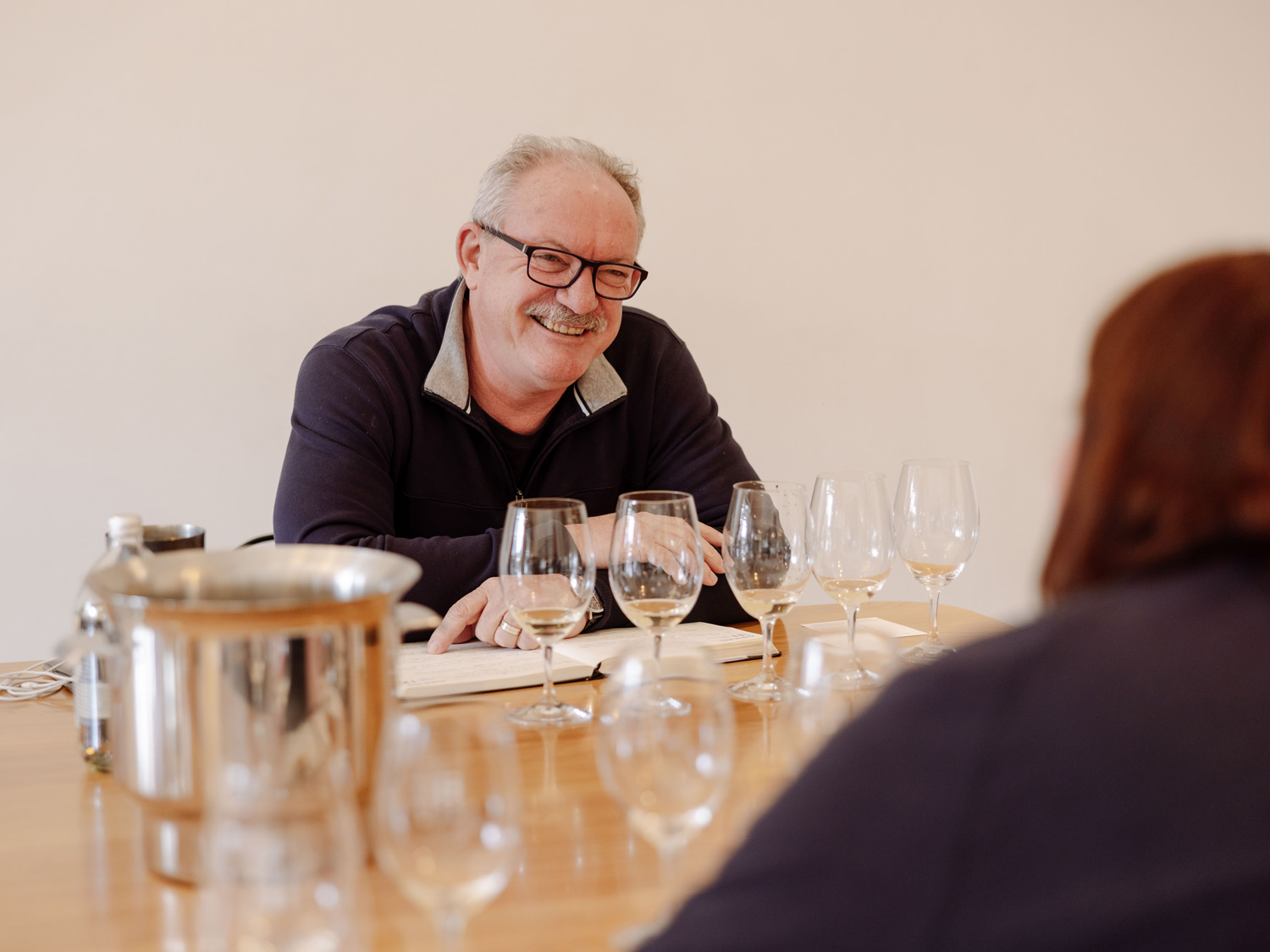
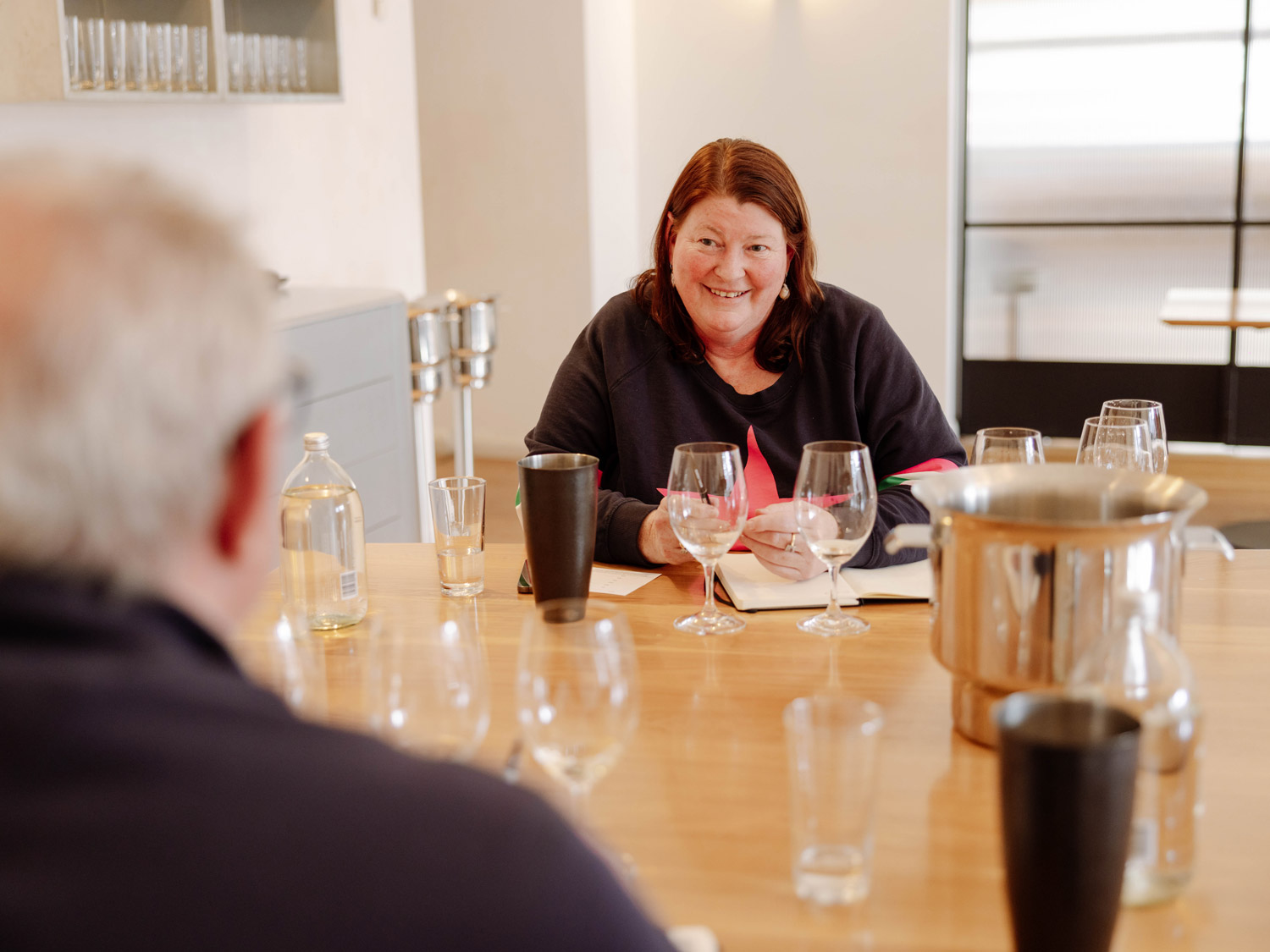
Our panel: Xavier Vigier DipWSET, Wine Buyer/Advisor/Head Sommelier Mr Claremont Wines; Kate McIntyre MW, Marketing and Business Development Manager of Moorooduc Estate; Dr Ray Nadeson, Winemaker and Owner Lethbridge Estate; Ed Carr Group Winemaker Accolade Wines (House of Arras); Natalie Fryar Winemaker and Owner Bellebonne; Hayley Williamson Sommelier at Nomad; Christian McCabe Owner restaurants Embla and Lesa and wine importer/wholesaler Principal Wine.
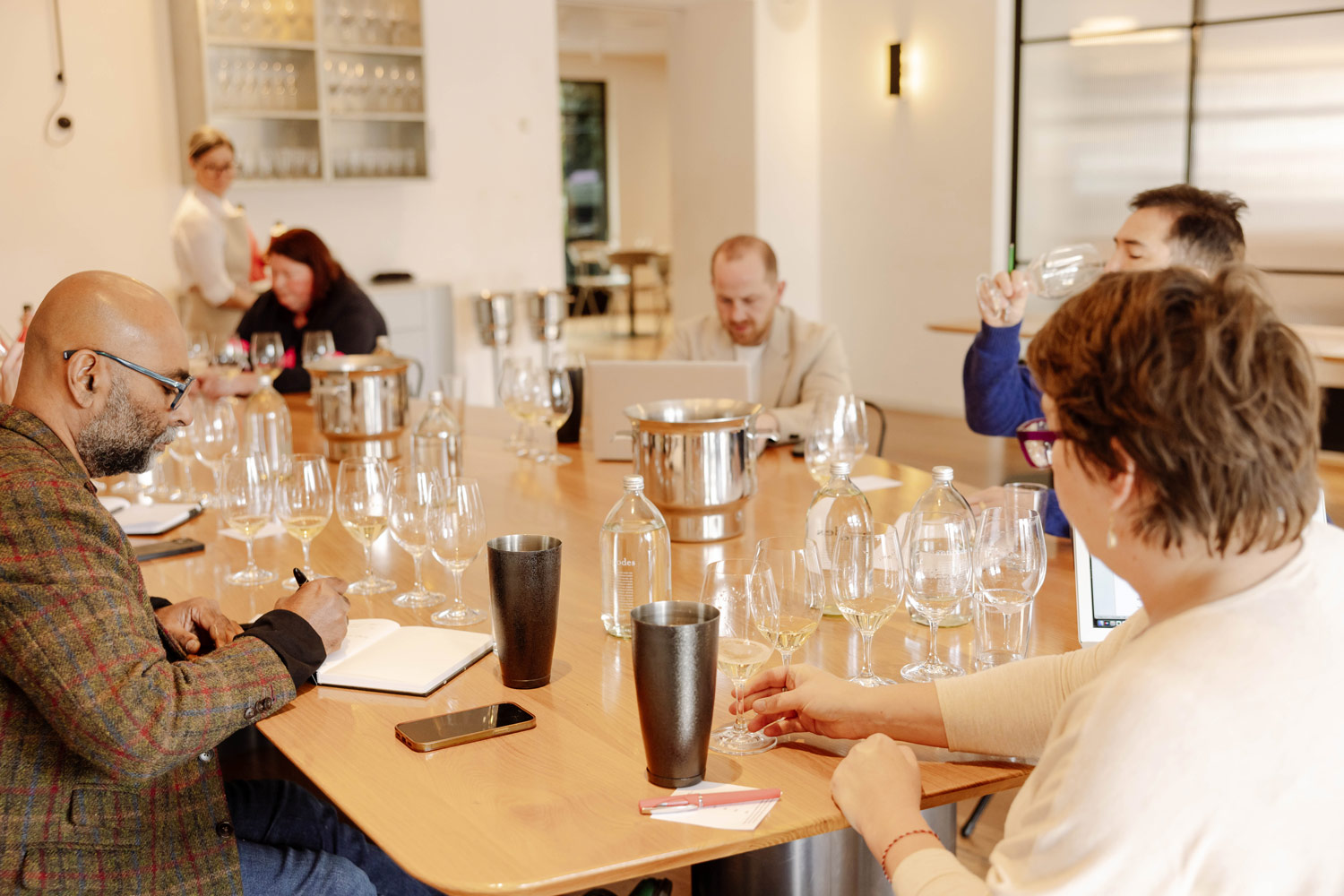
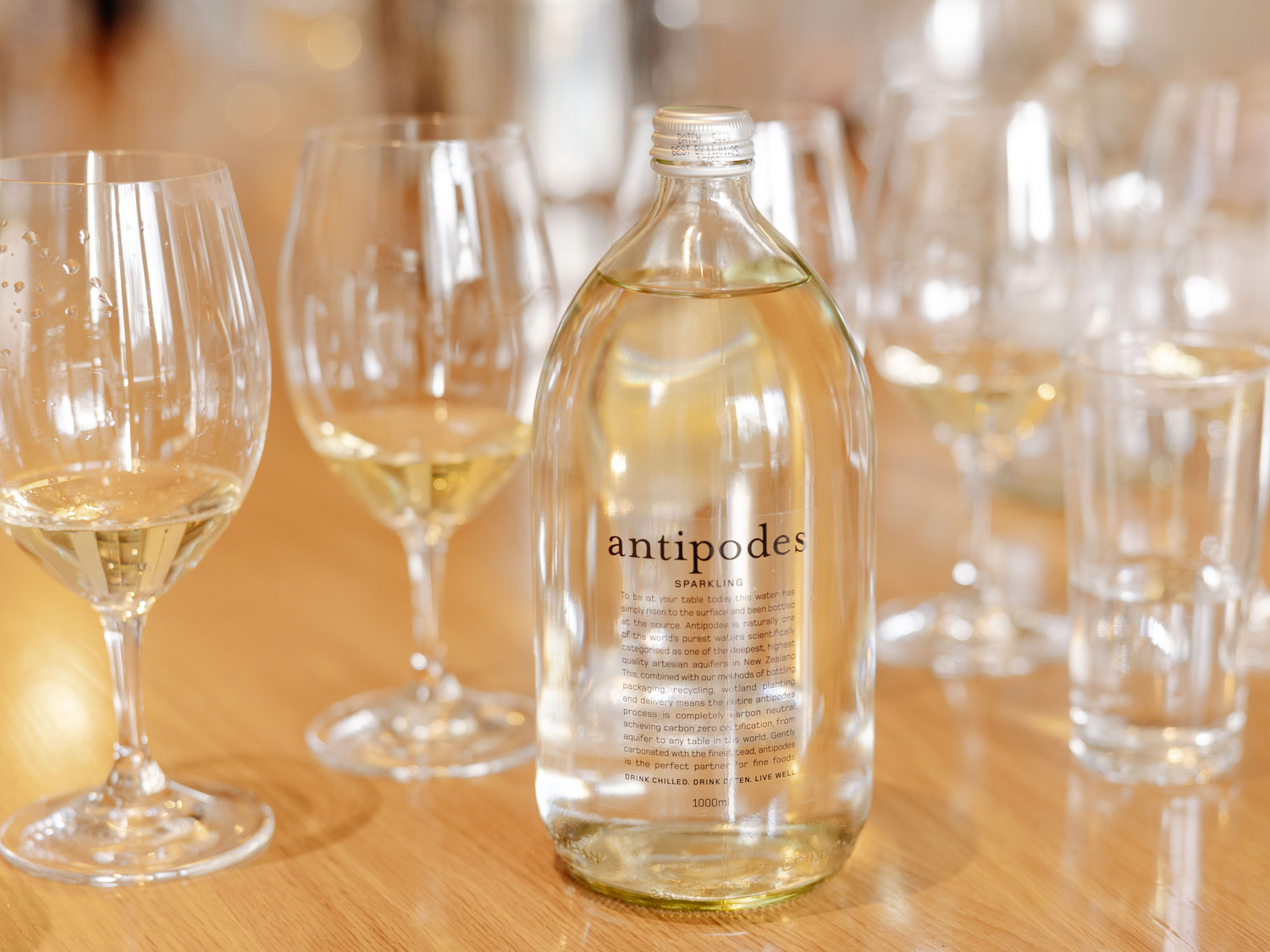
“It was a pleasure to be part of the tasting. I have done smaller brackets of Tasmanian sparkling but don’t think I’ve ever lined up this many wines before,” Carr said. “There’s great diversity of style, as you all saw… But if there’s anything over time that has become clear to me, it’s the great longevity of Tasmanian sparkling. With time on lees, it can just go on and on… and then after that with time under cork, I think it just evolves these wonderful secondary and tertiary characters without losing it… they don’t blow out in general; they’re tight and you’ve got a good acid line and they just hold it together. …You think of the best sparkling wines from around the planet and they’re all complex and rich, but they’ve got life in them. They’re bright, fresh, vibrant, celebrating nice acid wines. I think Tassie shows some of that character in the glass. If you end up with that in the glass that’s really what you’re after.”
“I enjoyed the breadth of examples,” added Williamson. “It’s interesting to me how you can take it whatever direction you want to… I think that there were some really nice examples of different styles… and I thought a lot of them have that really nice length and acidity that stayed with you and kept carrying on. There were a few that were a bit unbalanced, but overall, I was really impressed with the quality of all of them.”
“I have done smaller brackets of Tasmanian sparkling but don’t think I’ve ever lined up this many wines before,” Carr said.
“Sparkling wine producers have learned how important growing the fruit in the right place is, and I think that’s where Tasmania really comes into its own,” said McIntyre. “Some of them were big and powerful and obviously had a lot of winemaking behind them, and some of them were a little bit more pared back and sort of Zen and elegant… but all the wines I really liked had beautiful fruit ripeness without voluptuousness, and that’s what sparkling wine needs, it needs to have fruit ripeness, it needs to have precision, but the acid needs to be there, and I think that’s really exciting in wines we looked at today.”
“I think that it’s gone from a pioneering sparkling region to a professional sparkling region,” added Carr. “And like most Aussie sparkling now, you can see the house styles stamped on those labels, and I think that’s an evolution and it’s a maturity of that evolution that people have grown up with doing a bit of fishing and then they lock in on the style and it’s what they want.”
“…When you do a sparkling wine tasting of sparkling wine from Champagne and from the UK… I think it’s one of the most exciting things to do, because it’s not obvious who’s best anymore,” added McIntyre. “It’s just the stylistic character of the wines.”
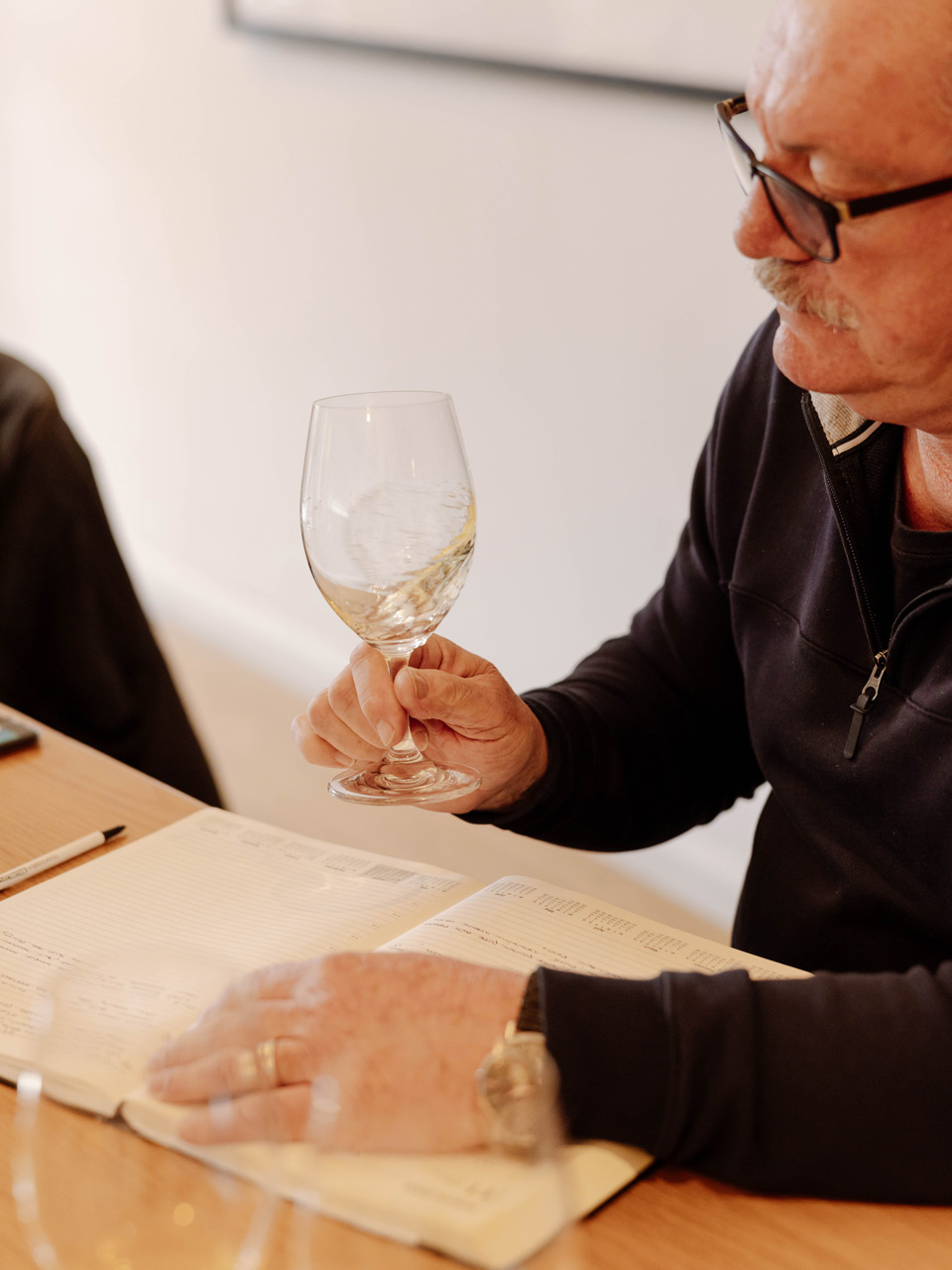
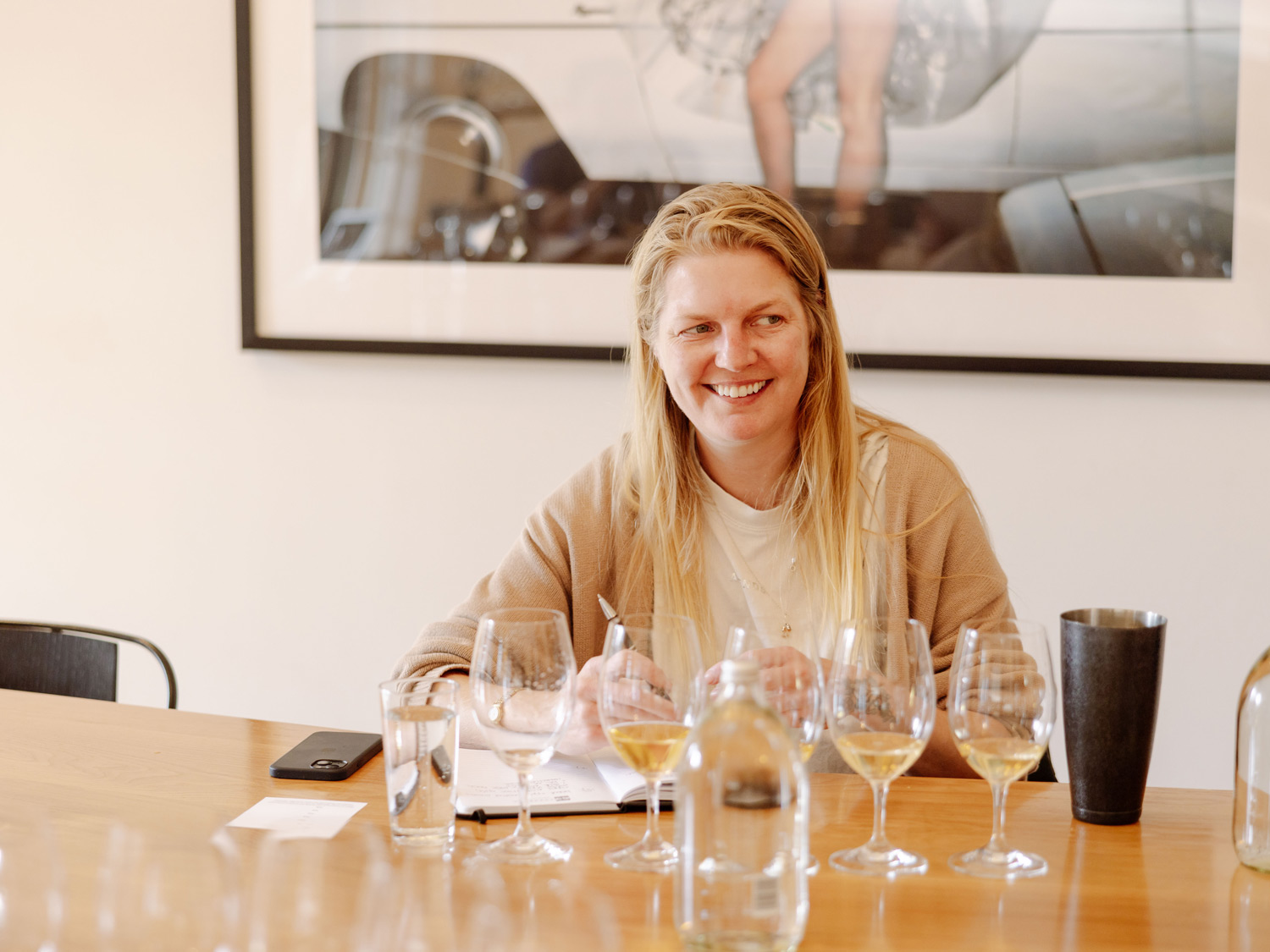
“I’ve been 23 years making sparkling wine just in Tasmania… Previous to that it was everywhere else,” said Fryar. “I thought it was a strong line-up. …I mean, there are a couple of wines there that I’m not going to spend any money on, but I thought wow actually… in general, this is strong…”
“…I think that we should be very proud… Not me personally!” said McIntyre. “But you guys for the work that you’ve done in finding the right place to grow the fruit and honing the winemaking skills and the blending skills and the understanding of dosage and all that kind of thing.”
“I think even the wines where they should have dialled that dosage back by a gram a couple of grams,” added Fryar, “…even in those wines, the line that drove through that sweetness was still there, and I think going to Ed’s point, this is the truth of Tasmania, this is the truth of the structure of the wines that we make there, and we can make there – that’s why we all do it. …We do it because the fruit structure is astounding, but we also do it because the fruit power and expression is greater than I’ve seen anywhere else in the world… You’re not allowed to say that. You’re not allowed to say that there could be any rival for the great European sparkling wine regions, but the fruit power we get is quite amazing. That you can be fully expressed at lower Baumes is why sparkling winemakers find these extreme regions…”
“All the wines I really liked had beautiful fruit ripeness without voluptuousness, and that's what sparkling wine needs, it needs to have fruit ripeness, it needs to have precision, but the acid needs to be there, and I think that's really exciting in wines we looked at today.”
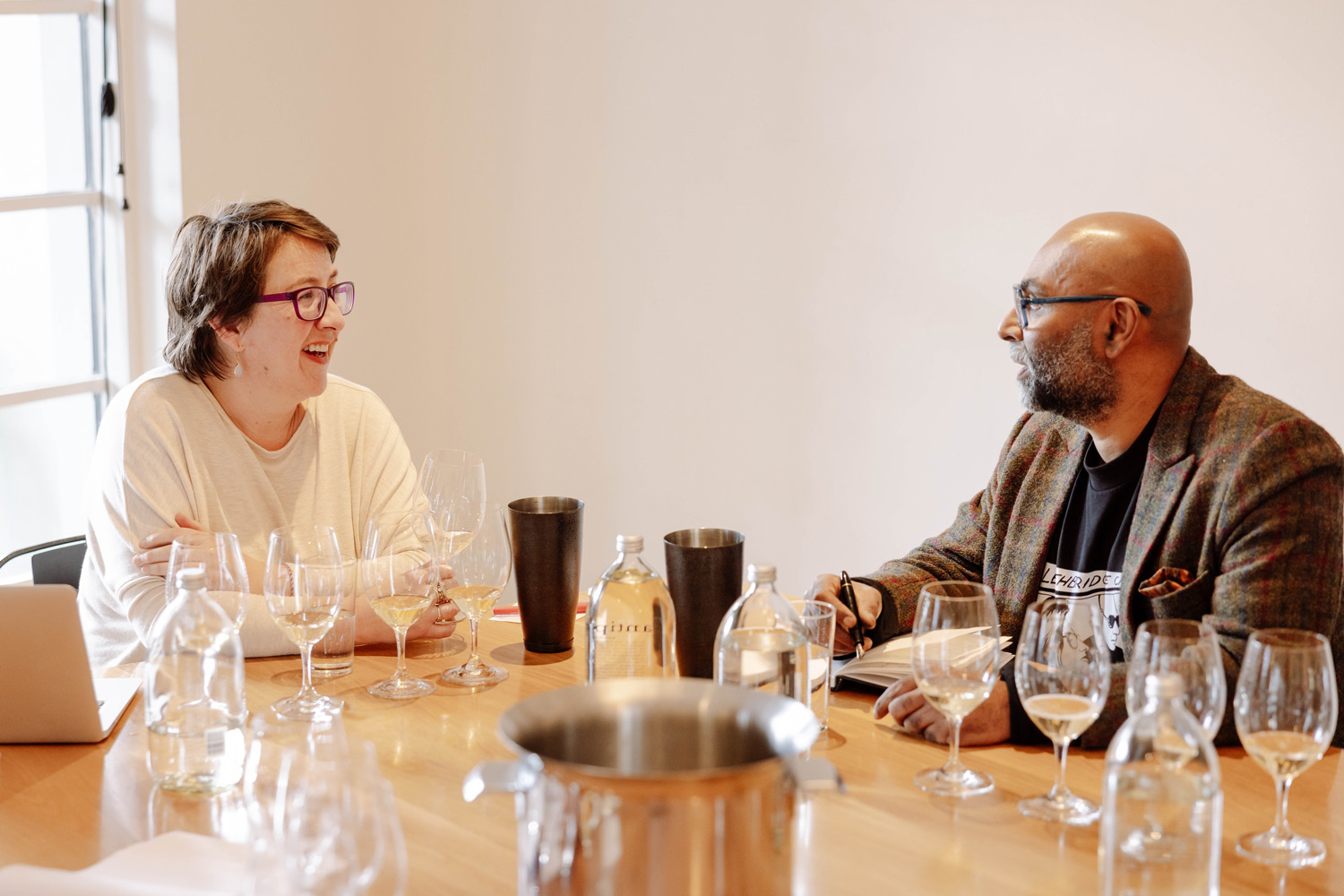
“…Some of these wines have a little bit too much dosage,” McIntyre agreed,” and I think some of them maybe had not enough …It’s that balance, and it’s also those layers of flavour that when the wine’s gone out of your mouth that delicious residual finish you get from really good sparkling wine… Drinking sparkling wine should remind you of watching fireworks going off… it should be explosive and delicious and have that sort of afterburn, afterglow kind of a thing… And I found that in more than my top six wines today, so I think that was pretty cool.”
“It’s the elegance that we can deliver,” continued Fryar. “You can have giant wines, huge wines that pour out of a glass that are deep, rich and layered and yet finish on an ethereal note. All great sparkling wine no matter where it’s grown should finish on that ethereal note… Where you’re thinking, ‘There’s more; I’m not weighted down by this experience, I’m uplifted by it’. You know that’s the whole key of sparkling wine, and I think that’s why we’re all driven to it. Not just making it but drinking it.”
“As a group I found that the compelling wines were very compelling, which is something to be said because you know it’s been a long time since I’ve sat down and drunk Tasmanian sparkling,” admitted Nadeson. “And I now think there are wines there that I would definitely buy… There’s no doubt in my mind …I suppose the thing is we all have this sort of overlay of chauvinism… and I just don’t drink Australian sparkling wine that often… and that’s tragic, I know… but today I have now seen the light!
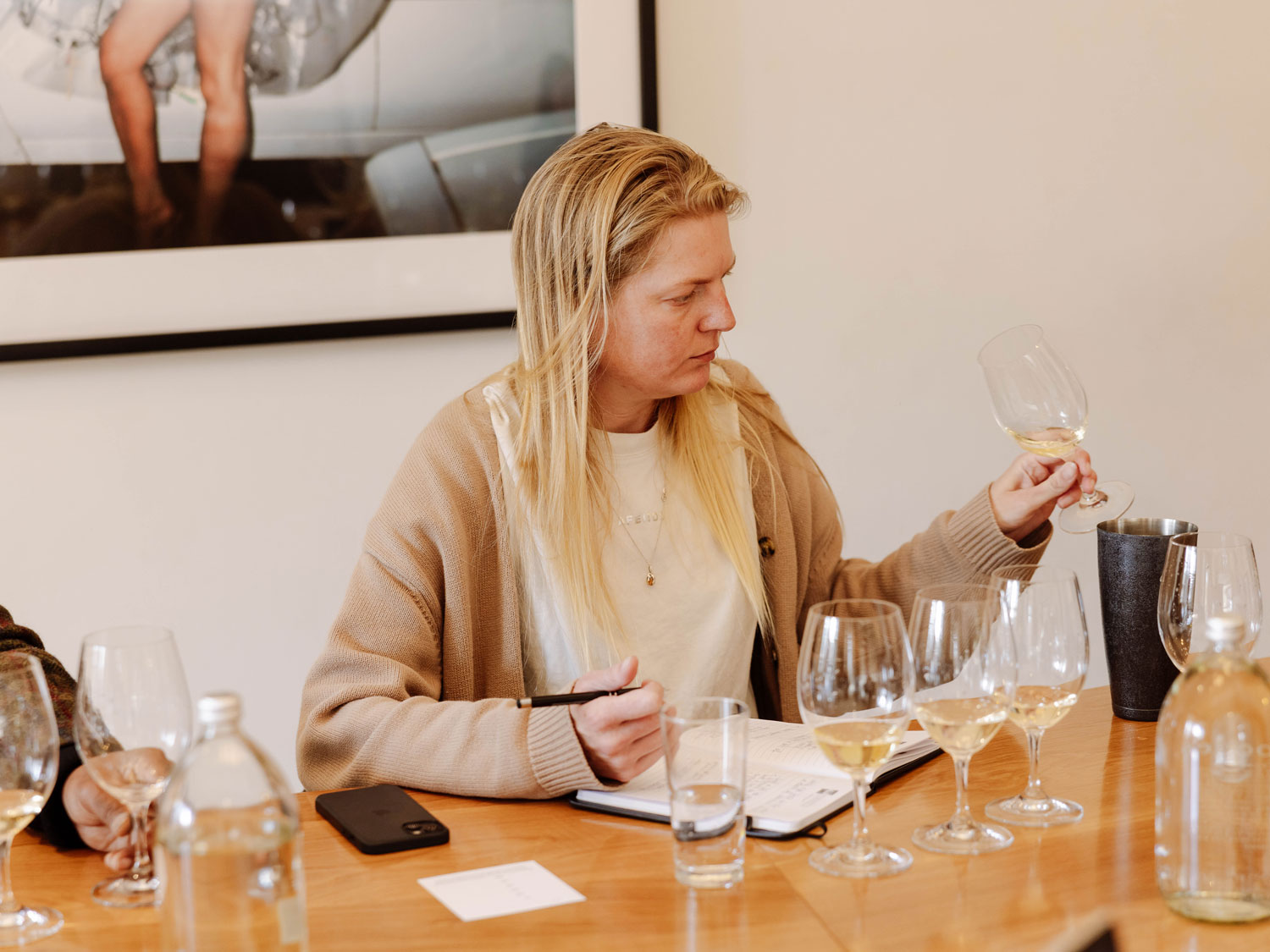
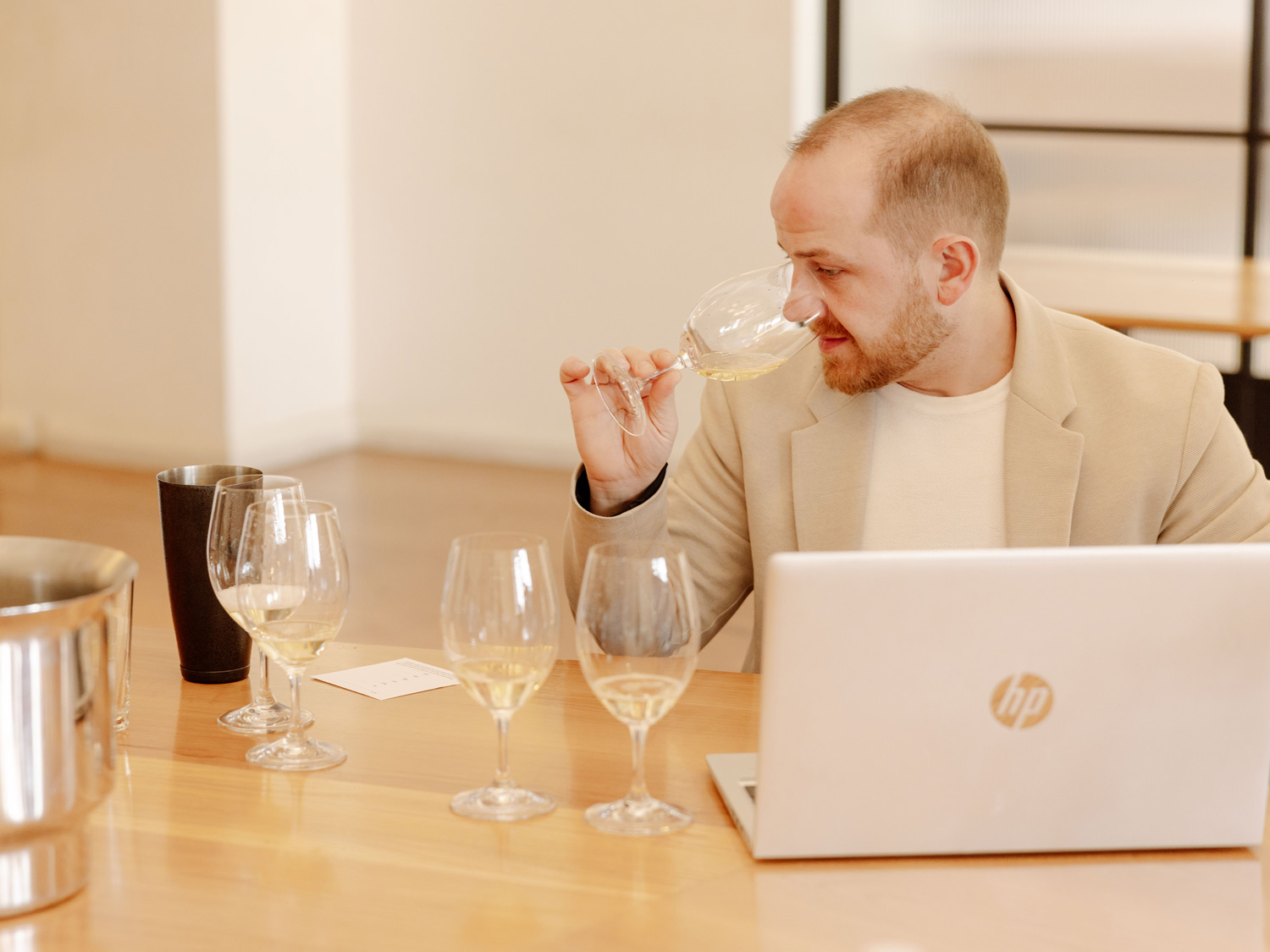
“At least in a few examples there I found that what I loved was that complexity with density, and the ability to drive through that acidity. And so that shows me that the sites these wines are made from and the finesse that the winemakers are making in those wines is good… I mean there is still a little bit of play in my opinion in the dosage, and there is a tendency towards sweetness, and then there were a few people that have dialled it back a little bit too much… I think the acid either was added or had not enough…”
“One thing you don’t do is add acid to Tassie. Well, you just don’t,” laughed Fryar.
“…The balance was not there for whatever reason,” continued Nadeson. “So, those are one or two examples, but overall, I think that wines that were compelling were very compelling, and I think this is the exciting part. … We are seeing this ability to make styles, differential styles… I think that’s cool, because we are seeing some wines there which are super elegant but they’re definitely richer, riper, more robust… and then there’s the more aperitif style wines, which are lovely and elegant and gorgeously balanced more in that citrus profile… I don’t want to drink 15 wines that taste like aperitif style, high acid, citrus…”
“I think that it's gone from a pioneering sparkling region to a professional sparkling region.”
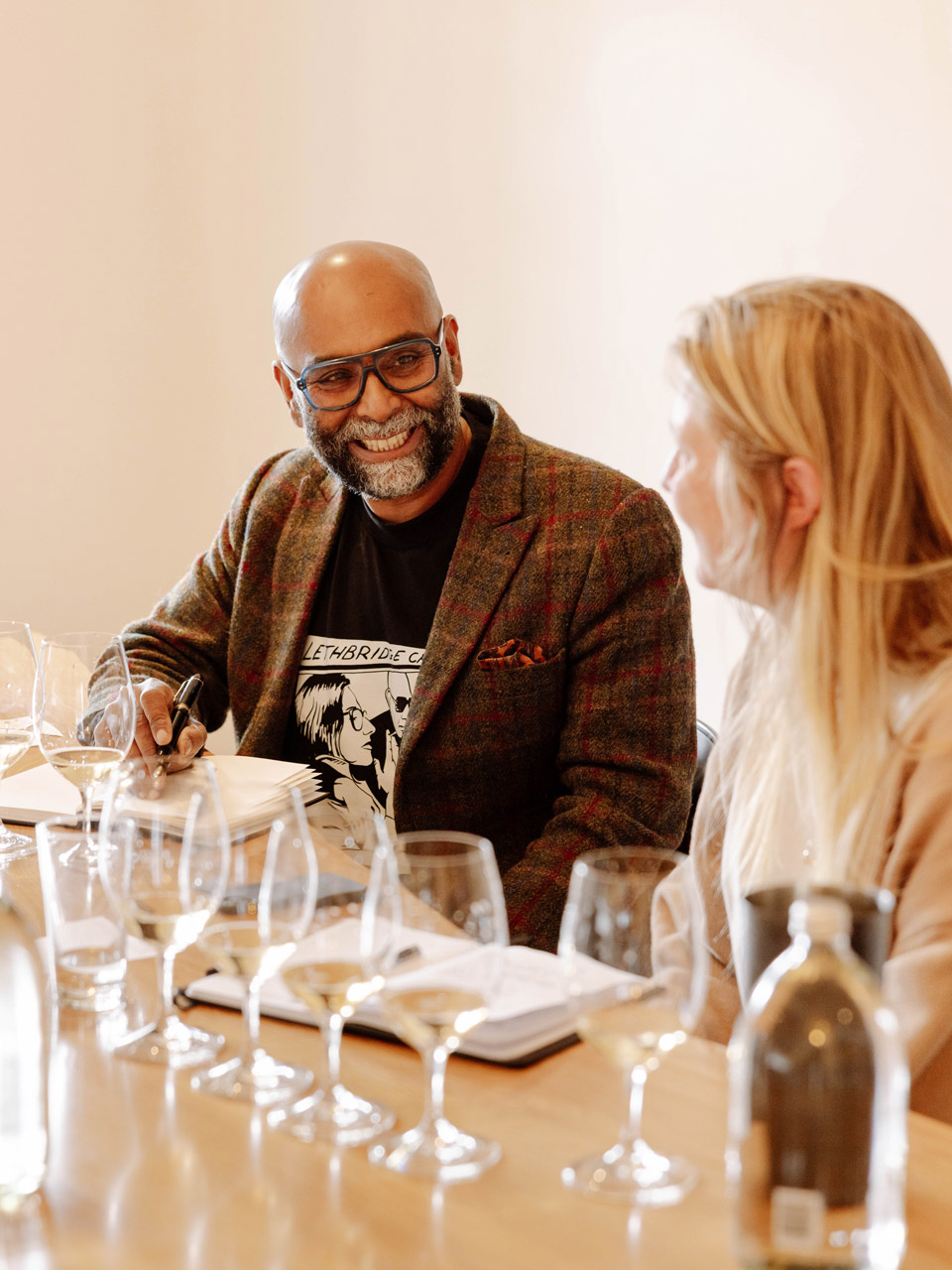
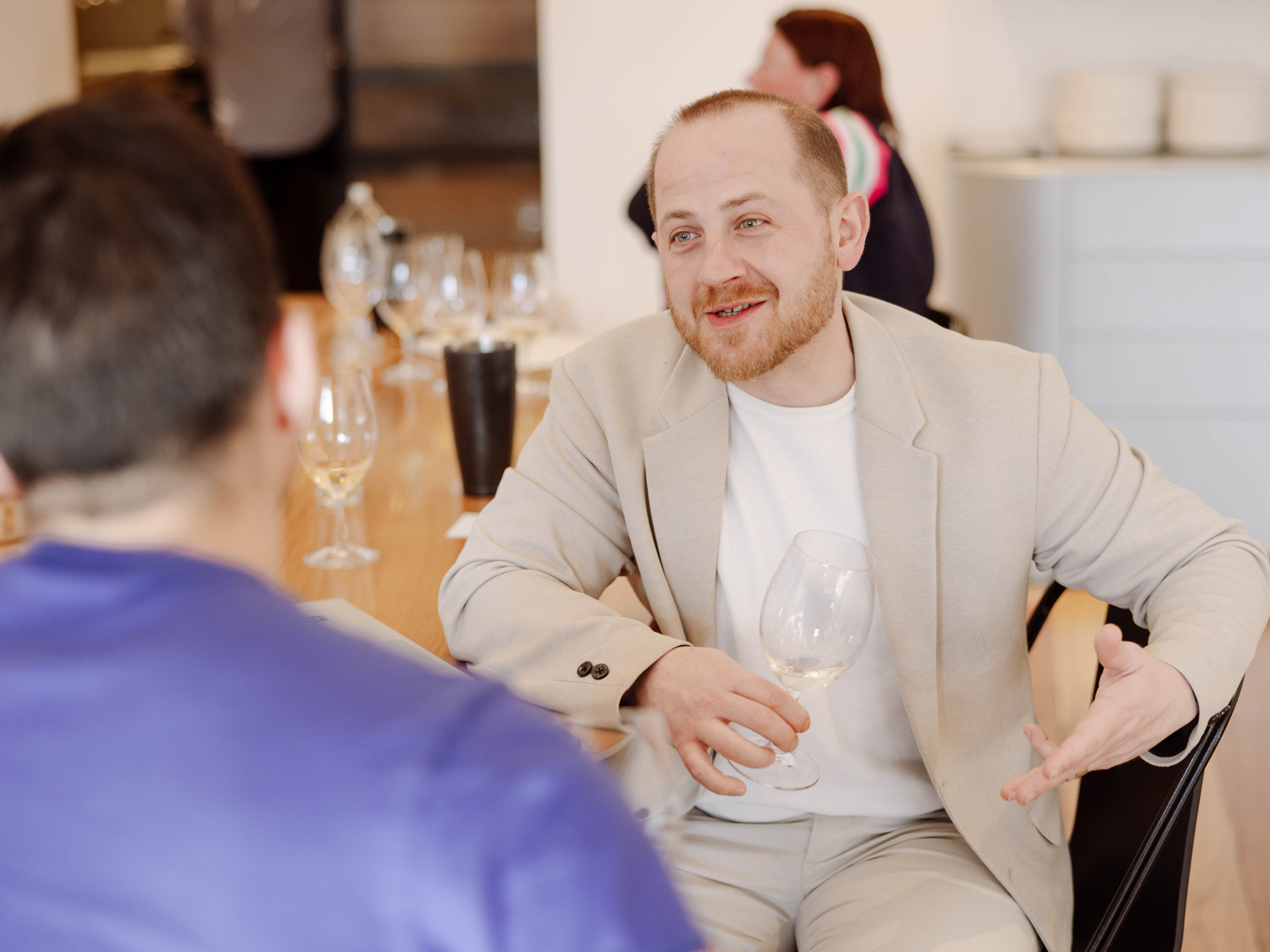
“The fruit power and expression is greater than I've seen anywhere else in the world.”
“There’s a lot of hit and miss on the residual sugar,” said Vigier. “I felt for me like this as a general line-up it looks like Tasmania is still looking for its own self… I’m seeing this great encouragement, but obviously this is what needs to be expected when the market is so young. …I feel like the fruit character is amazing. I can see the purity of the fruit. I just feel like technically there are some issues, which I’d like to see being resolved… The good wines were great… For me, the best wines were the wines that were quite restrained, not showing too much autolytic, looking at the purity of the fruit… So, it’s just to tweak, I think… either it’s viticulture or winemaking technique, just to make it a bit more seamless, and I think we’re on a good path, of course – it’s an amazing place to grow grapes… I wouldn’t be comfortable selling all these wines, yet there are quite a few I definitely feel of international standard.”
“I think it’s exciting because we’ve got these wines that are stepping up and standing out as being really exciting,” added McIntyre. “And yes, some of the wines did have too much tricksy winemaking and some of them still maybe didn’t have the complexity that we’d like to see from a really great wine, but that’s more Tasmanian sparkling wines that I’ve tasted in one session… I think probably ever, but certainly for a very long time, and the wines that stood out to me were world class… there were more than one or two, and I think that that’s really exciting and really telling for the maturity of the Tasmanian sparkling wine market.”
“You’re right,” said Nadeson. “We are maybe, whatever it is, 30 years old, in real terms making quality sparkling wines; I think this is a pretty big step forward.”
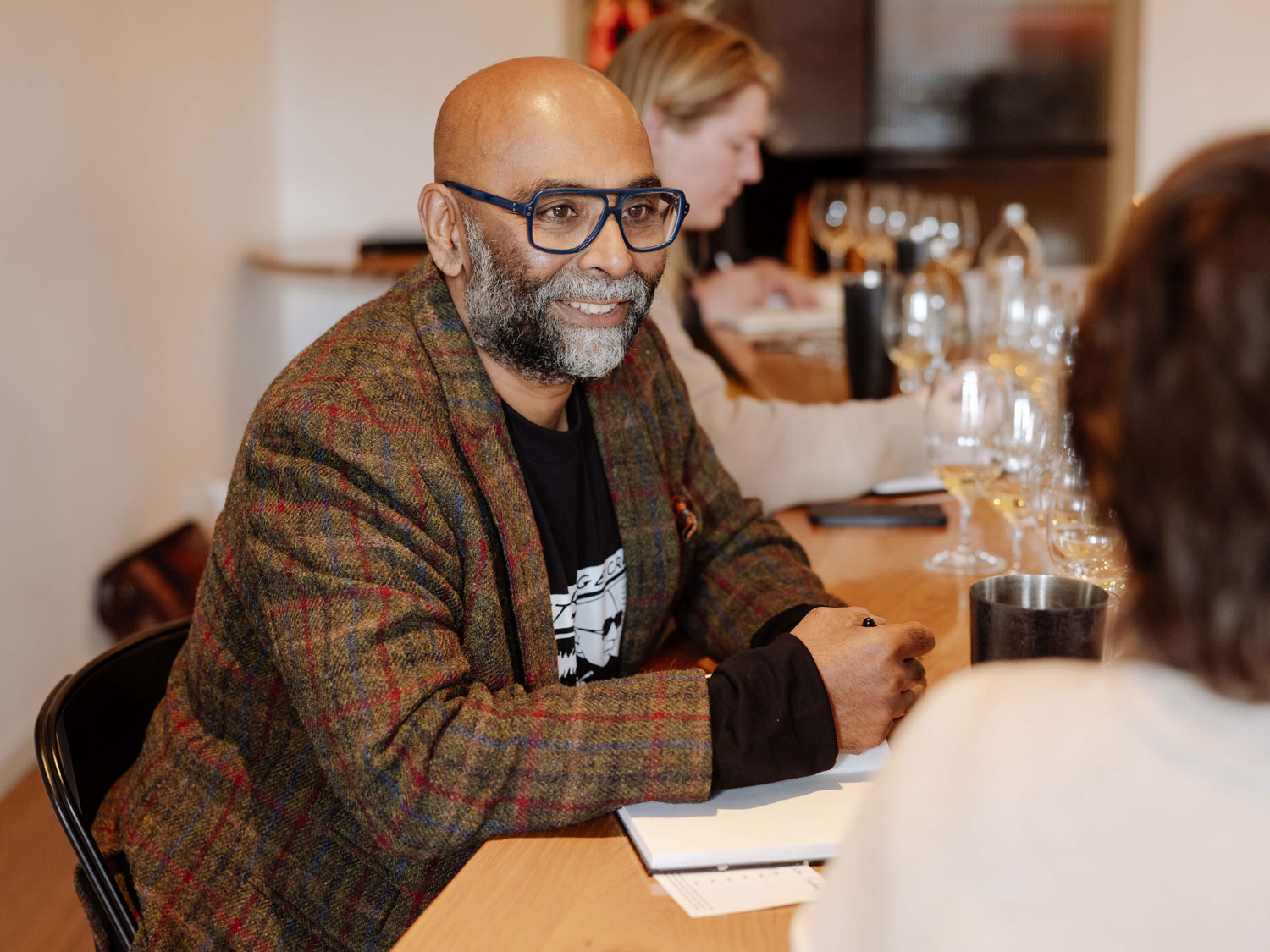
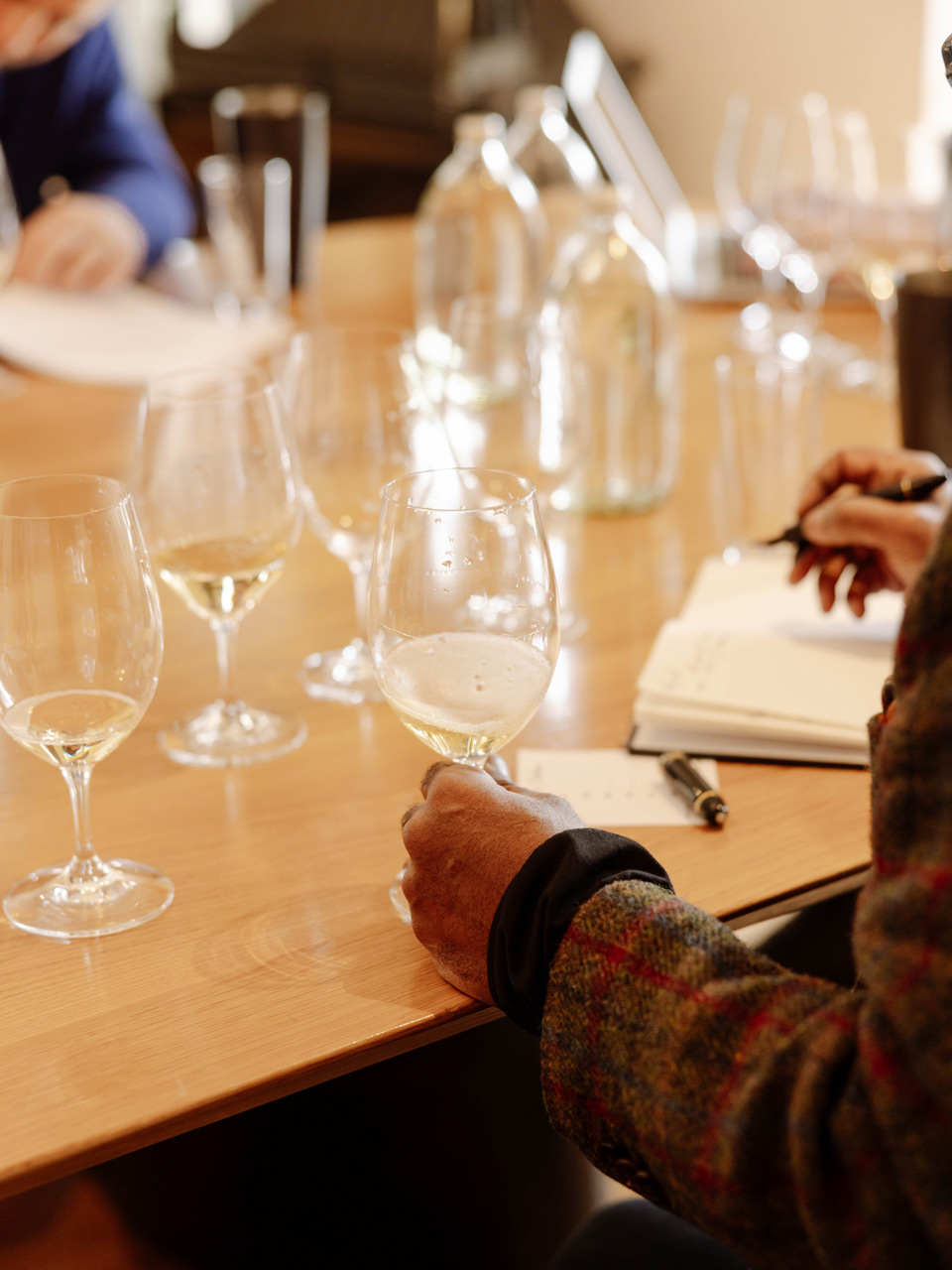
“So, a question for you,” said Vigier. “In Tasmania, is sparkling wine production a by-product of still wine production?”
“No, the majority of the grapes in Tasmania end up in sparkling,” answered Fryar. “It’s really interesting having both Ed and I here, because I concentrate fundamentally on one region and one set of vineyards. And Ed has got great growers in multiple regions within Tasmania, and multiple types of terroir. And that’s the great joy of what sparkling wine has traditionally been.”
“From my natural wine bar kind of angle,” said McCabe, “a lot of… almost all natural wine philosophy was taking away winemaking things and would lead to a lot of faulty… or things that weren’t great… and I observed the Champagne region in particular… that they searched to strip the winemaking away and look for the terroir… Before probably 20 years ago, Champagne was quite a homogenous style of wine, and now you can really kind of zero in on regions of Champagne and the soils and so on, and I think that’s probably the next part about Tasmanian wine is to look at, because they do have potential with great terroir and they know how to make the wines now and so it’s about discovering the best sites and how to kind of show those off.”
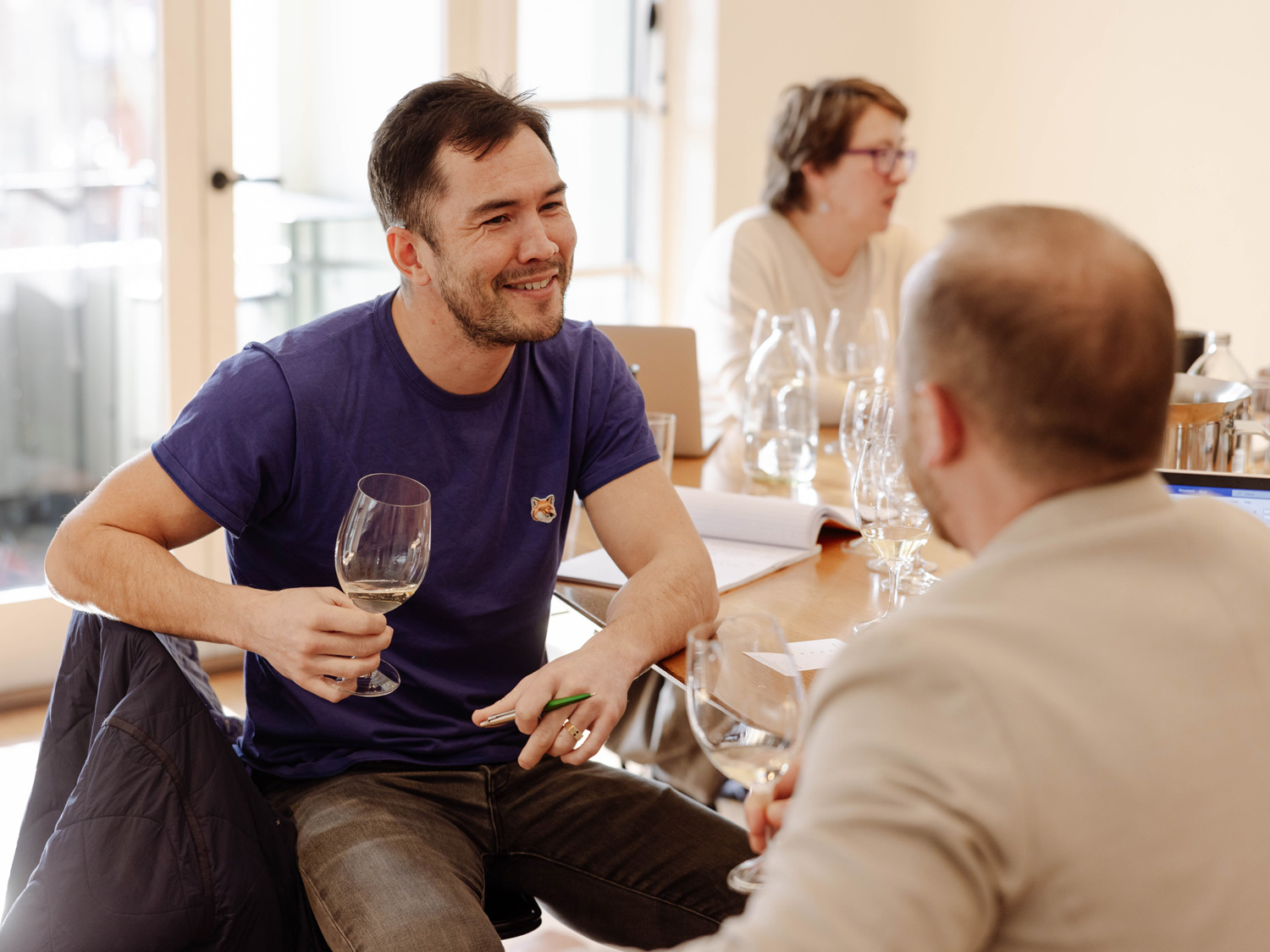
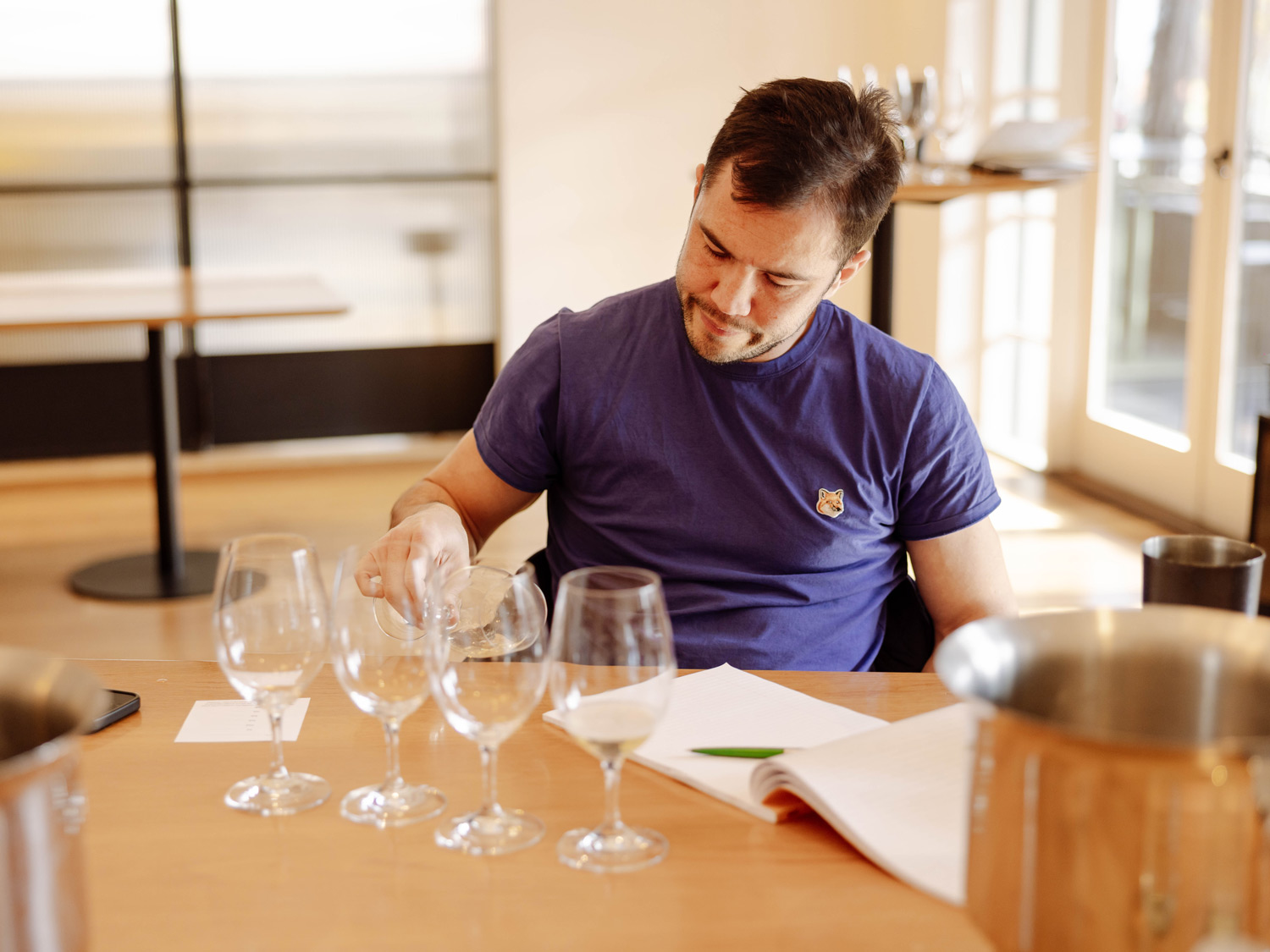
“All great sparkling wine no matter where it's grown should finish on that ethereal note... Where you're thinking, ‘There's more; I'm not weighted down by this experience, I'm uplifted by it’. You know that's the whole key of sparkling wine, and I think that's why we're all driven to it. Not just making it but drinking it.”
“I can pick regions in there,” said Fryar. “There is some kind of regionality. There absolutely is.”
“It comes down to whether it’s a brand or the regions,” added Carr. “Our approach is multiple sub-regional blending. And over the number of years… a pretty long time… we’ve looked at which region supports which label, which variety, and gleaned the best we can out of those regions. So, our response is, the brand is stronger than the sub-region. And that’s the way that we chose to go.”
“…The great art of blending in sparkling wine should never be overlooked,” said Fryar. “And we should never give it up for, ‘There is no legitimacy unless it’s one single vineyard.’ I’ve never believed in that, and I don’t think that the Champenoise believe in that. Lord knows they wouldn’t have a business if they did.
“…But for us, we always say the most exciting thing about Tasmania is that it’s not really planted. We know where we believe our finest wines come from …But it’s exciting to know there are vineyards that don’t exist at the moment. …They’re not cropping. Or they just haven’t been discovered yet…. There are slopes that I’ve been looking at, and I’m sure, Ed, you’ve been looking at them for 23, 25 years, going, I wonder when that farmer’s going to die!”
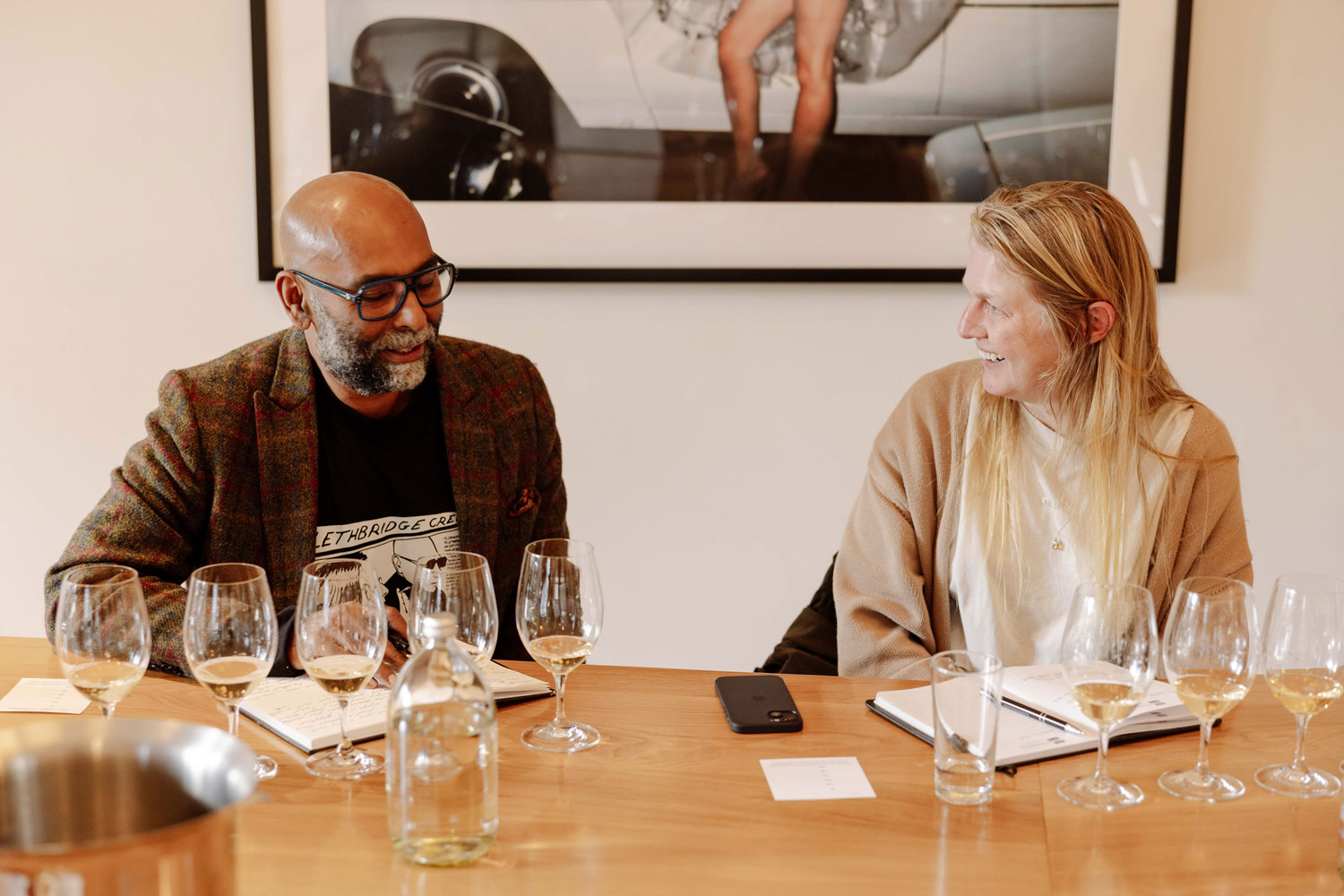
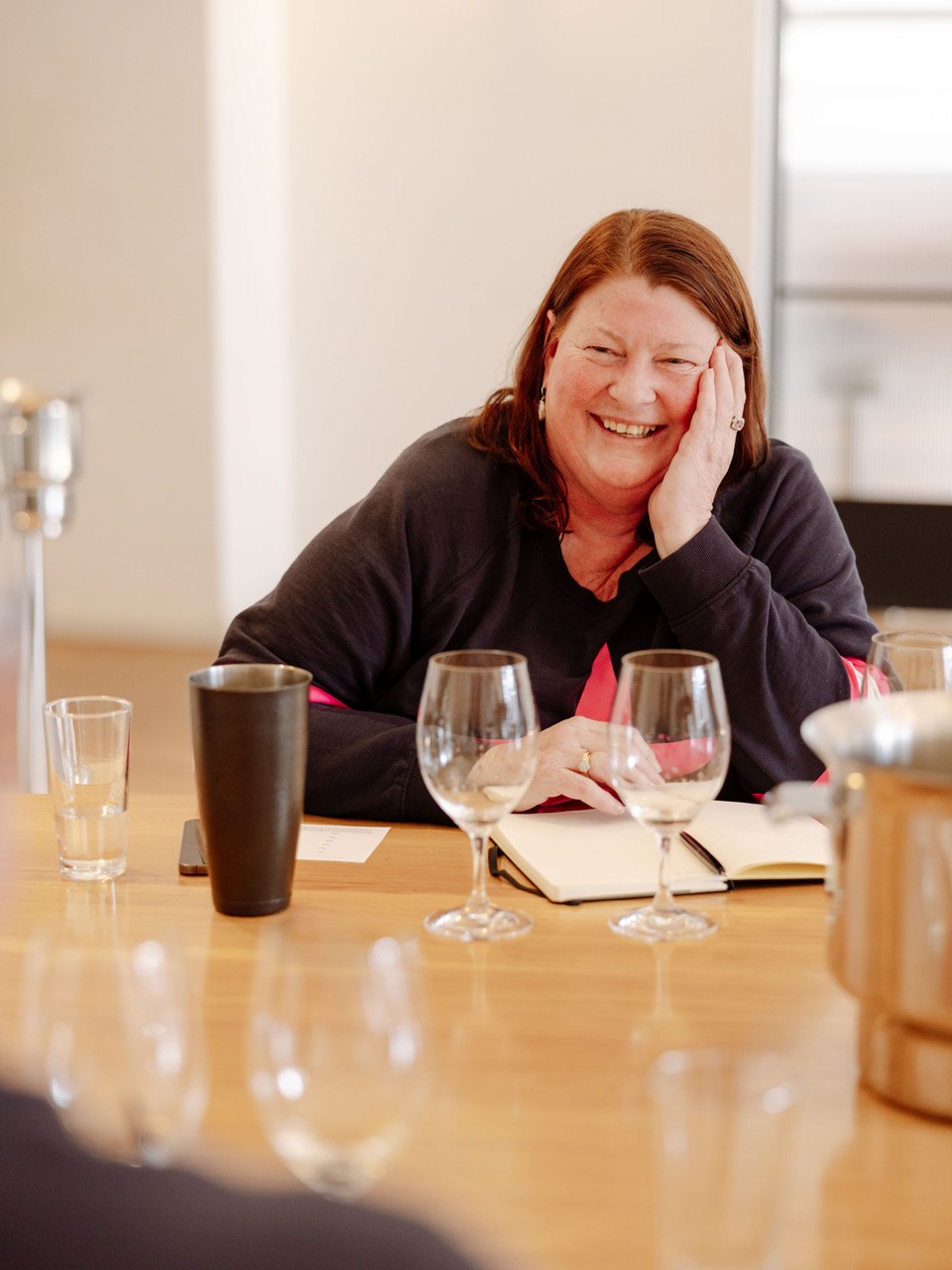
“Australia has done a really good job of selling Champagne, almost to the detriment of Australian sparkling,” noted McIntyre. “I remember when they built Domaine Chandon, and I remember when we did tastings of Jansz together… And, you know, even then people who were growing, people who were making sparkling wine in Australia were excited about Tasmania, but it was even more inaccessible then and there was less experience and there were less people planting grapes and growing grapes and less access to the fruit.”
“When I first started to learn to make sparkling wine in the early 90s at Seppeltsfield in Great Western, we used to get three IBCs [intermediate bulk containers] of Tasmanian juice that would be sent up to us to make into… probably Salinger at that point. And I just went, what the hell is this? It had, you know… that word compelling has come up a few times today… but that juice… I mean I never saw the fruit; it was in Tasmania, and I couldn’t get there… It just changed what I thought sparkling wine in Australia could be… or sparkling wine could be. You taste fruit in Tasmania, and it’s a very different experience… And people are investing there for a reason, and the reason is the fruit. That’s it.”
“Champagne is going to always be Champagne,” concluded Carr. “The sparkling wine market is growing at a great rate at the premium end of the market. So other cold climate producers, Franciacorta and other things are coming in strong as well, but let the market choose… I think Tasmanian sparkling represents Aussie winemaking influences and place – it’s bright, clean, crisp air and it’s sun, and it’s cold! And I think that’s what the drive is. It’s not this try and pick a winner out of the world… But I do think a lot of those wines would stand up on any tasting bench globally, irrespective of price point, and that’s what a lot of producers in Tasmania are aiming to do…”
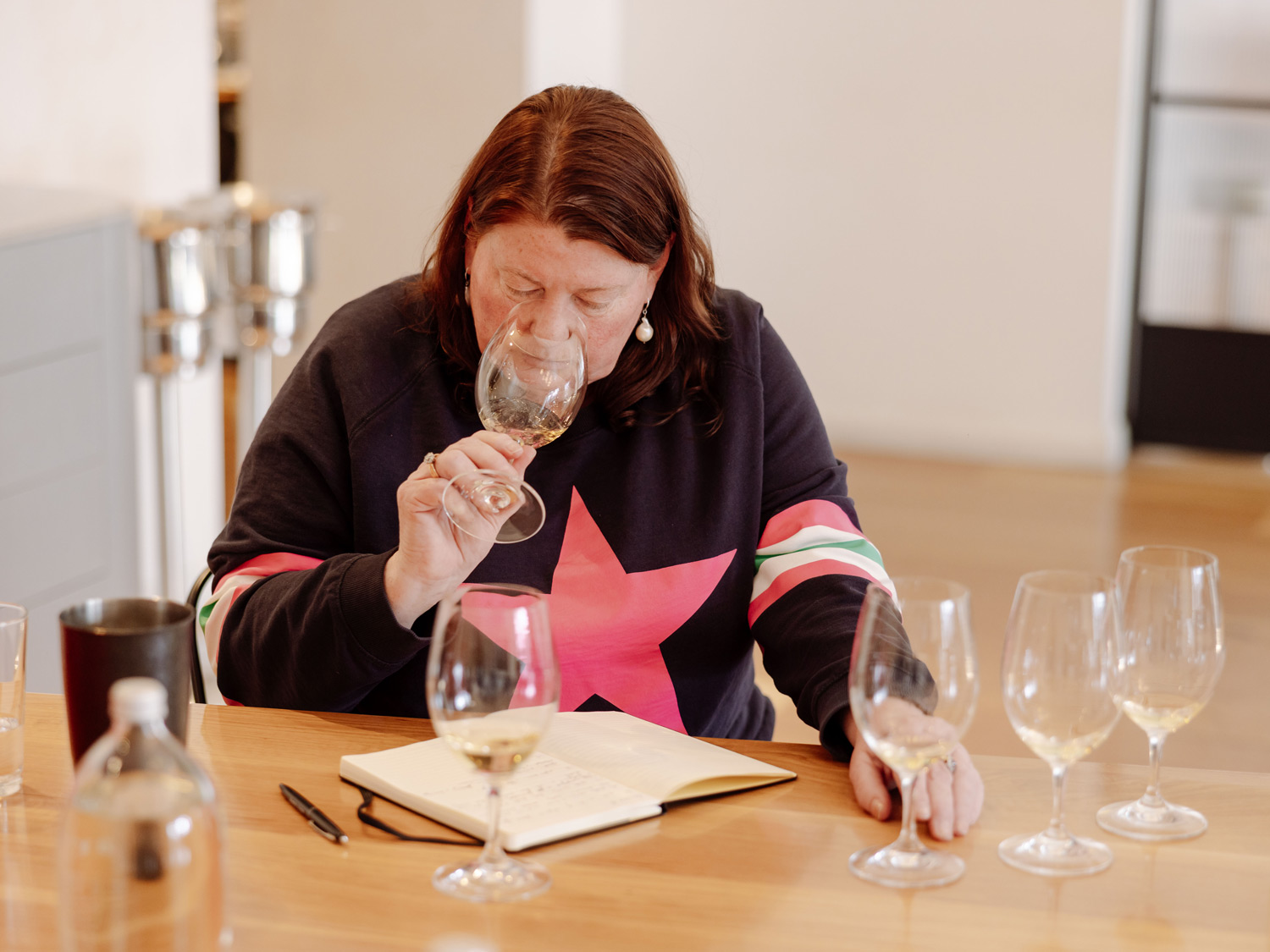
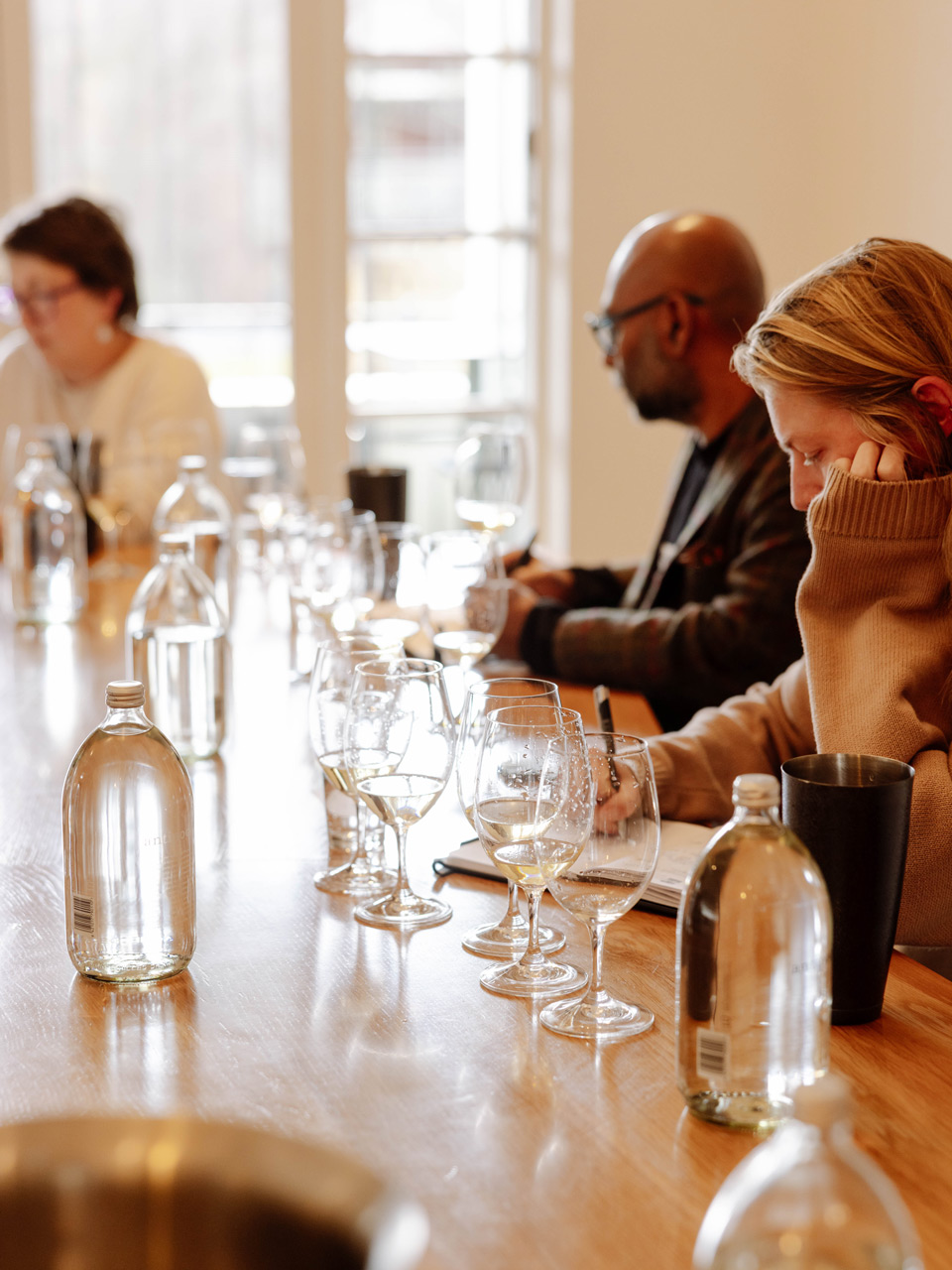
Xavier Vigier is the Wine Buyer/Advisor/Head Sommelier for Mr Claremont, which was founded in 2022. Prior, he was the Head Sommelier for Ten Minutes by Tractor for three years. He has worked for French wine specialist Clos Cachet, for Merivale at Sydney’s Felix Bistro & Bar, Catalina, Bentley Restaurant & Bar, Monopole and Ormeggio at the Spit. Vigier has completed the AWRI Wine Assessment Course and is a WSET Diploma holder.
Kate McIntyre MW is the Marketing and Business Development Manager of Moorooduc Estate, her family’s winery on the Mornington Peninsula. After an early foray into studying languages and the theatre, McIntyre was drawn into the world of wine, joining the parent’s estate in 2004 while studying for wine’s most gruelling qualification, becoming a Master of Wine in 2010. McIntyre also works broadly as an educator, writer, communicator and wine judge.
Dr Ray Nadeson is the winemaker and owner of Lethbridge Wines. During a career researching and teaching neuroscience at Monash University, Nadeson founded Lethbridge Estate with his partner Maree Collis. He also managed to squeeze in a winemaking degree in his spare time. Since 2003, Nadeson has been focused solely on the estate, farming with biodynamic principles and making wine from home vines, select local vineyards and as far afield as Heathcote, the Pyrenees and Henty.
Ed Carr is regarded as the godfather of Australian sparkling wine. Stumbling into wine with a degree in chemistry and microbiology, he took on a job solving a fermentation problem with a traditional sparkling winemaker in McLaren Vale. Wine stuck and Carr evolved into a sparkling specialist under the Penfolds banner. For almost 30 years, he has worked as the Group Winemaker for the same company (now Accolade Wines but formerly Constellation and Hardys prior), where he has overseen the sparkling program, including at Bay of Fires and The House of Arras, Australia’s most awarded sparkling producer.
Natalie Fryar is the owner and winemaker of Tasmanian sparkling specialist Bellebonne. She is a winemaking and viticulture graduate of the University of Adelaide. Fryar worked for Southcorp Wines for eight years before moving to Tasmania to head up the Jansz winery. She spent 14 years there, while also acting as senior winemaker for Dalrymple. After leaving Jansz in 2014, Fryar embarked on a consultancy business focused on sparkling wine, working with such as Pipers Brook Vineyard (Kreglinger et al), as well as launching her own handcrafted Bellebonne project, which has been critically hailed.
Hayley Williamson is currently working as a sommelier at Nomad’s Melbourne outpost. She worked as a sommelier for three years at Nick Hildebrandt and Brent Savage’s Cirrus in Barangaroo, before returning to Melbourne to head up the first foray for the Mary’s Group as wine manager. For almost three years, Williamson was running the restaurant and writing the wine list at Bar Romanée in Yarraville. She is currently scouting locations for a northside location to launch her own wine bar and restaurant. Alongside riesling, chenin blanc and homegrown tomatoes, Williamson has a particular passion for traditional method sparkling wine.
Christian McCabe started his career in his native Wellington, where he opened his renowned restaurant Matterhorn. Moving across the Tasman with Chef Dave Verheul, McCabe opened the Town Mouse in Carlton, before establishing Embla, and later Lesa, with Verheul and legendary UK natural wine importer and restaurateur Eric Narioo (Les Caves de Pyrene). He also owns niche wine wholesaler and importer Principal with winemaker Patrick Sullivan.
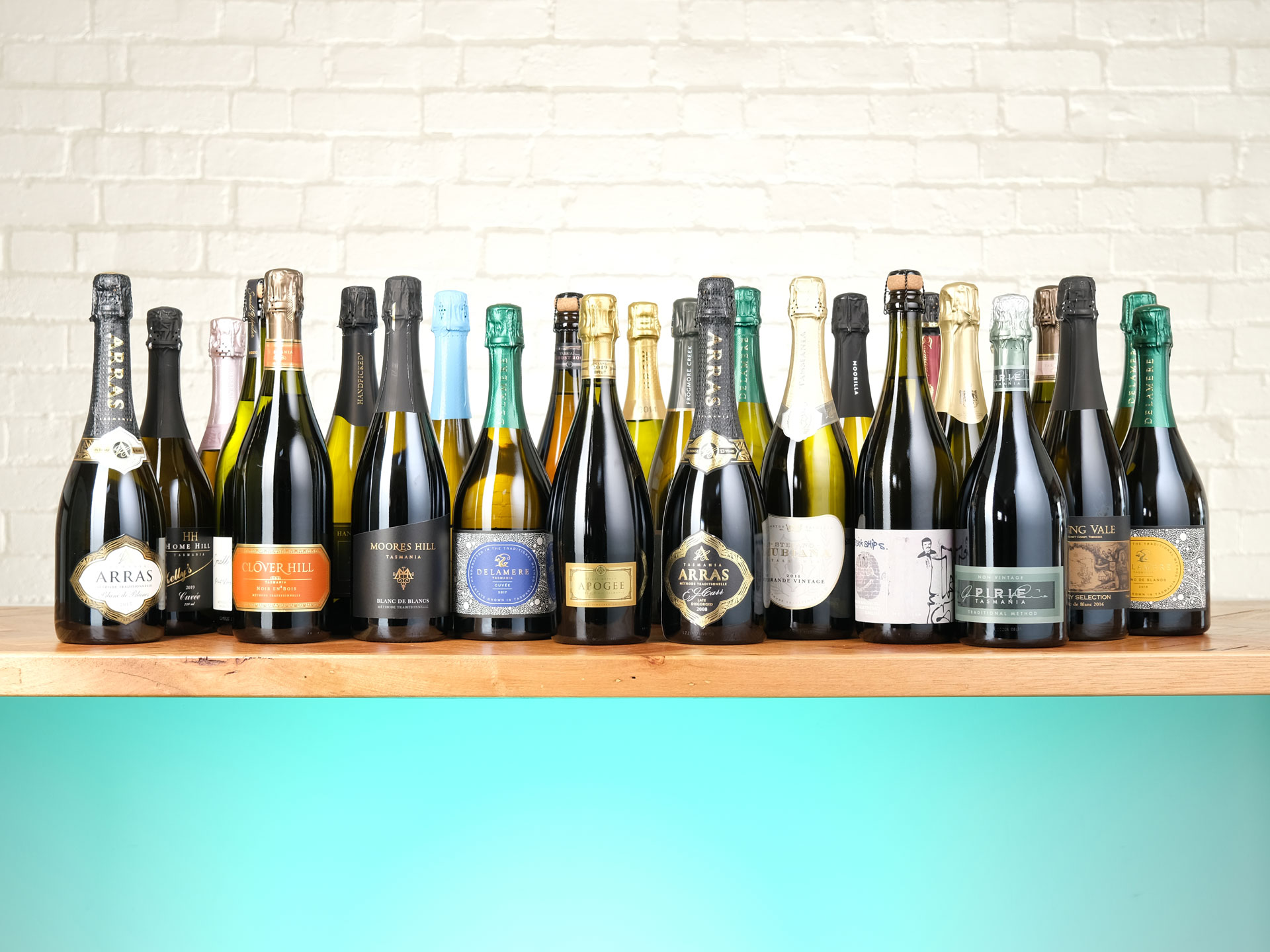
Please sign in or create account as candidate to bookmark this job
Please sign in or create account to save this search

Please sign in or create account as candidate to create a resume